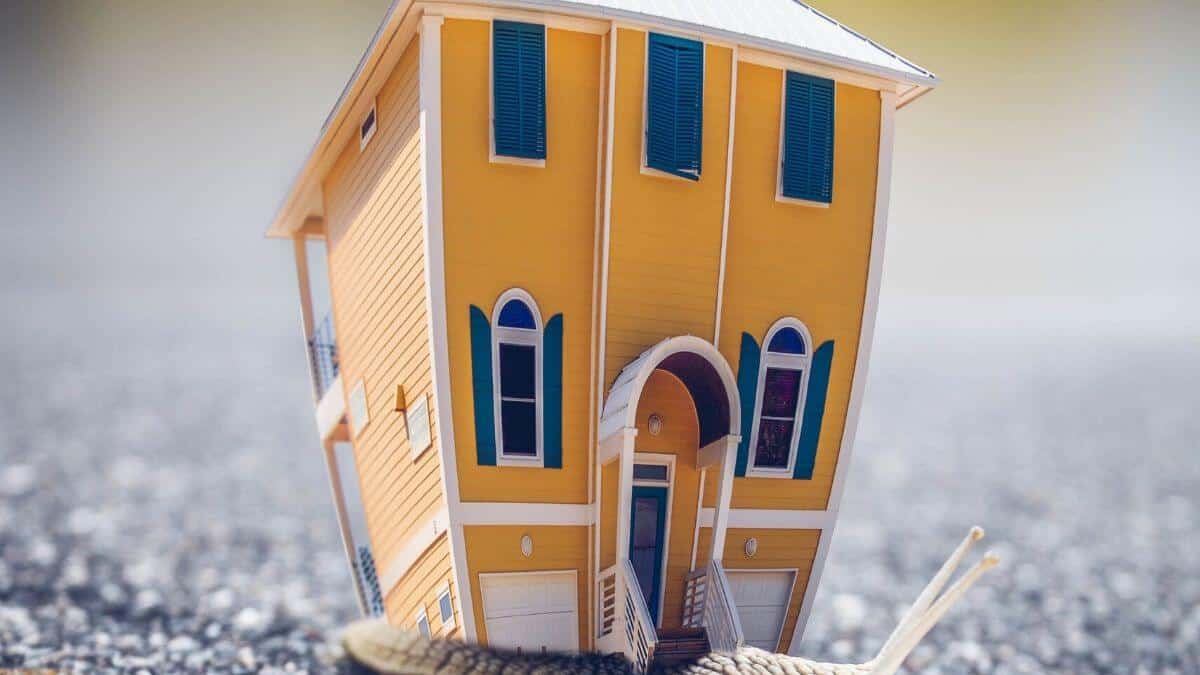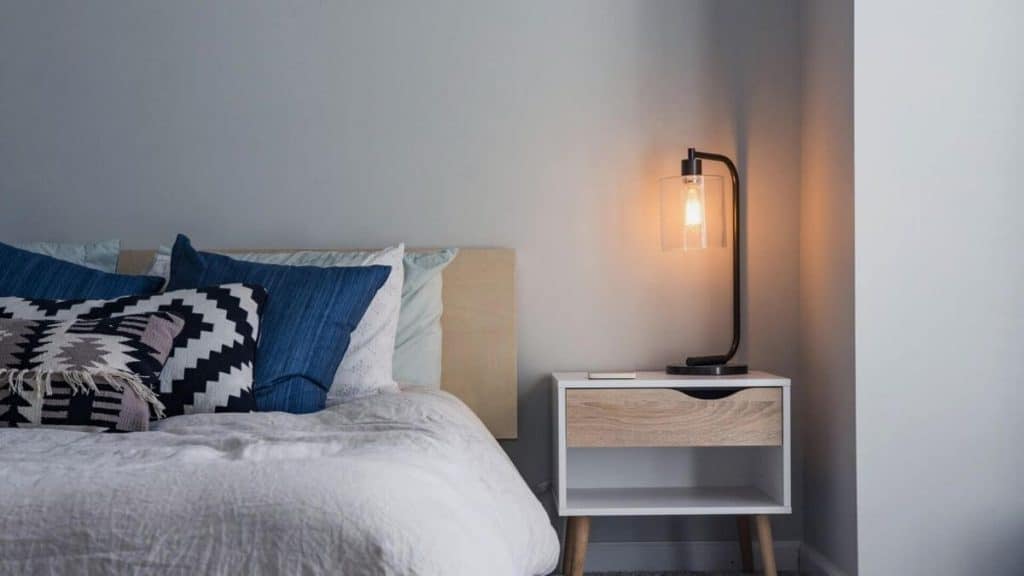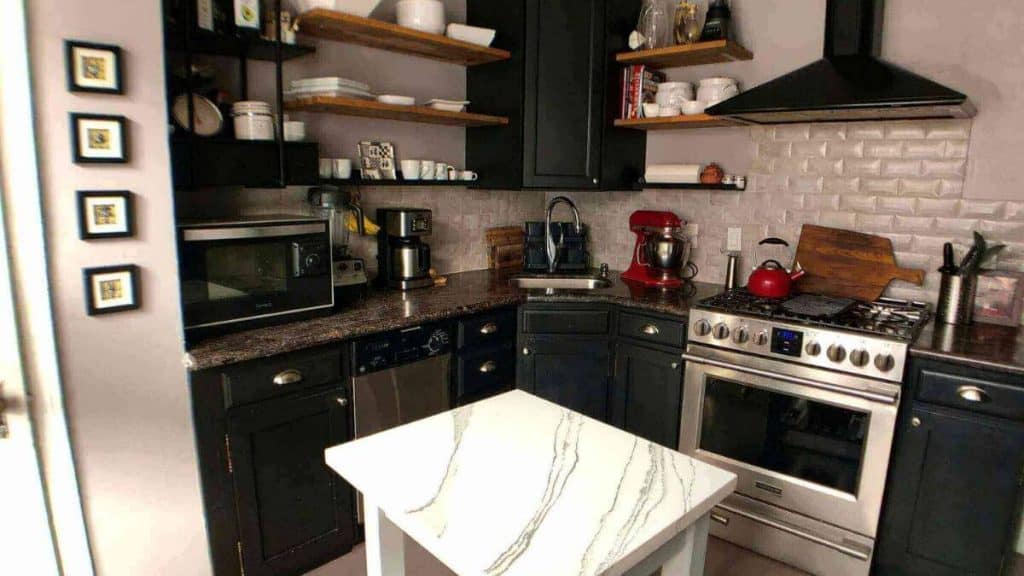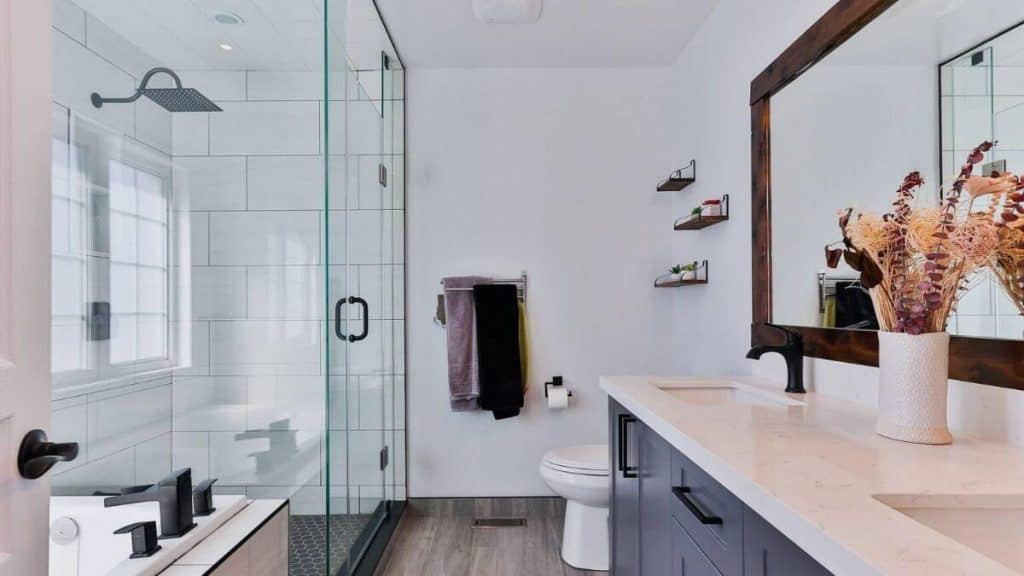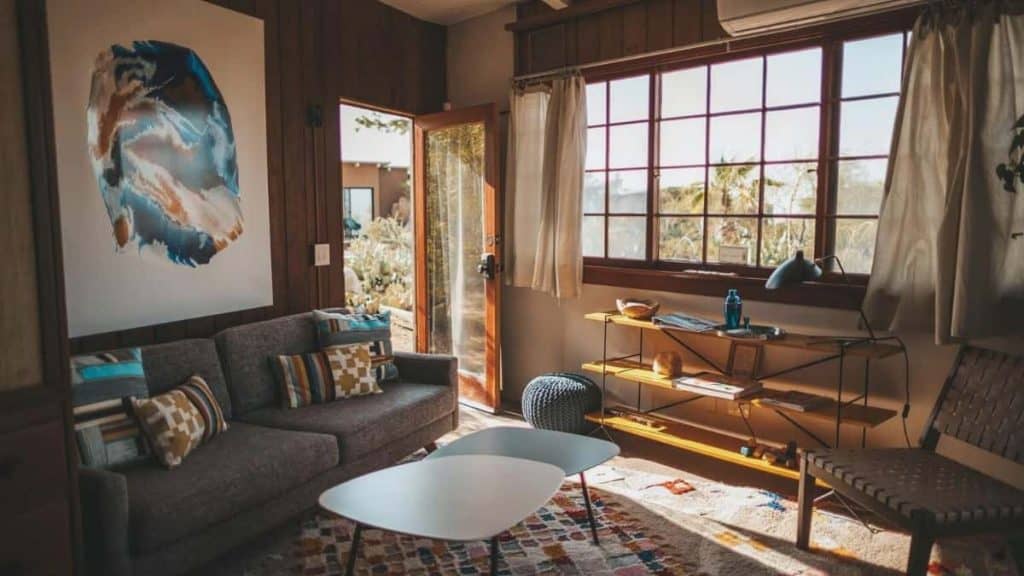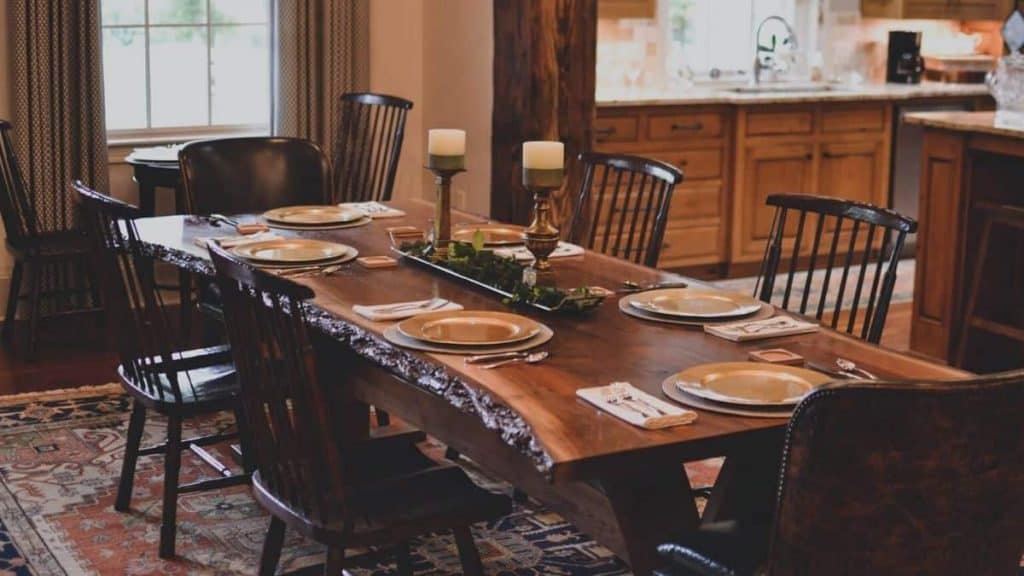Acquiring Spanish vocabulary in specific domains of knowledge, such as the objects and things in your house, is critical for improving your fluency and language skills. In this article, we’ll show you 175+ of the most common Spanish words and verbs for things you’ll find and activities you’ll perform in your house.
On top of listing the name of common objects that you can find in your house and rooms, we’ll provide you with useful verbs that you may need to describe or talk about your activities in your house.
Each section in this guide will focus on a particular room. In every section, you’ll find specific nouns and verbs related to that part of the house. We also included a General Housing Spanish Vocabulary section where you can learn verbs and objects that you can find and use around the house. At the end of each section, we’ll provide you with some examples so you can have a better understanding of how to apply these words into sentences.
Spanish Vocabulary for Different Rooms in the House
Even though there are some common nouns and verbs that we use to talk about are actions around the house, each room will have its own specific vocabulary. We’ll give you a summary of the most common house vocabulary that you can use in Spanish.
Spanish General Housing Vocabulary
Although some rooms may have their own specific words and verbs, when talking in Spanish about things or activities that happen in your house, there will be some general terms that we can use. In other words, this vocabulary will also be applicable to other rooms.
In this section, we compiled a list of general words about the house in Spanish. Here, you can find nouns to name objects that you may find in your house. We also gather some common verbs to talk about general actions or activities that people can perform. Finally, you’ll find some useful phrases so you can see how to apply this house vocabulary in your sentences and conversations.
Spanish Names for Rooms in Your House
| Image | English | Spanish |
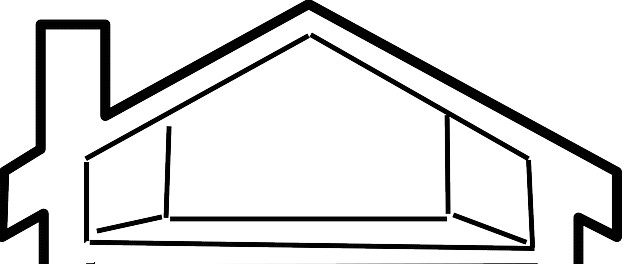 | Atic | Ático |
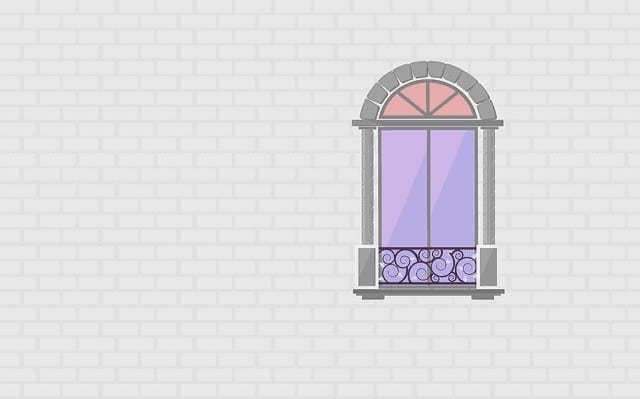 | Balcony | El balcón |
 | Basement | Sótano |
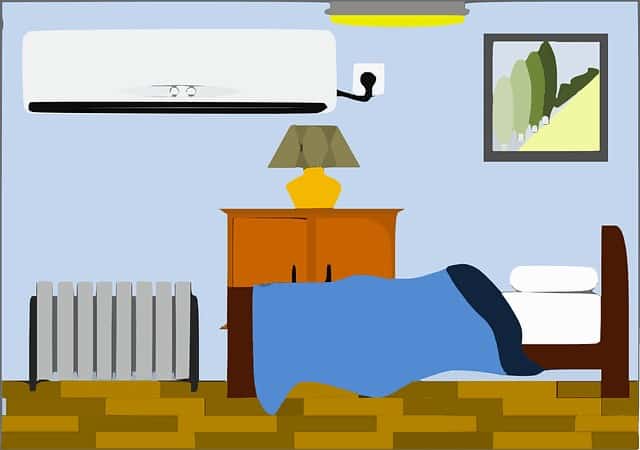 | Bedroom | El dormitorio / El cuarto / La habitación |
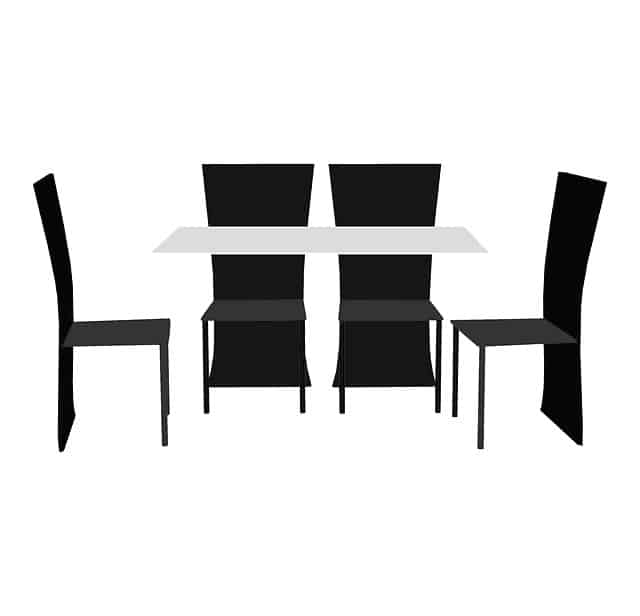 | Dining room | El comedor |
 | Garage | Cochera / Garaje |
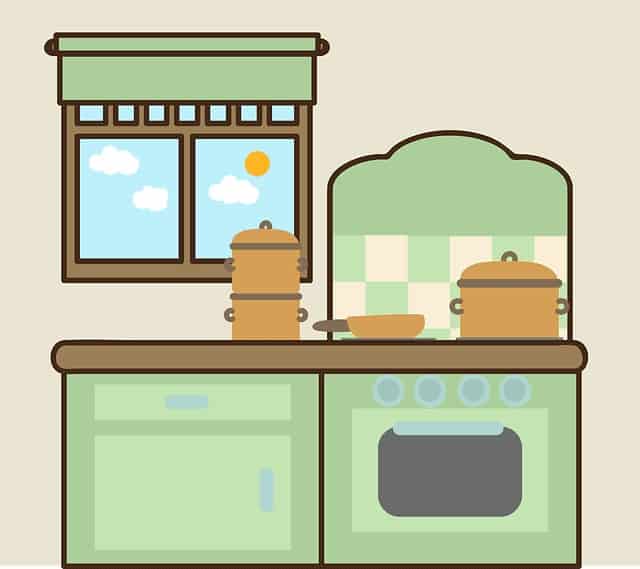 | Kitchen | La cocina |
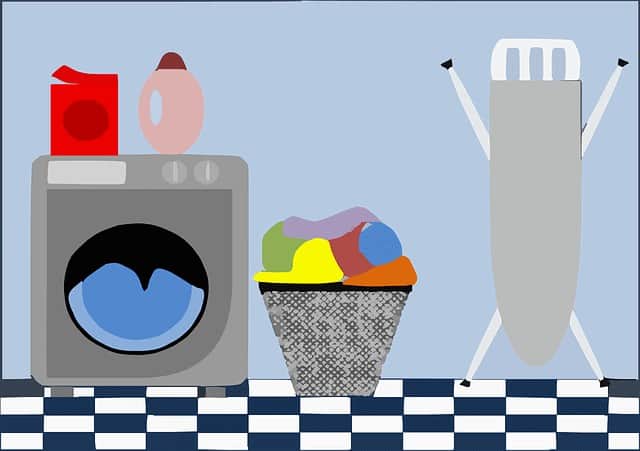 | Laundry room | El cuarto de lavado |
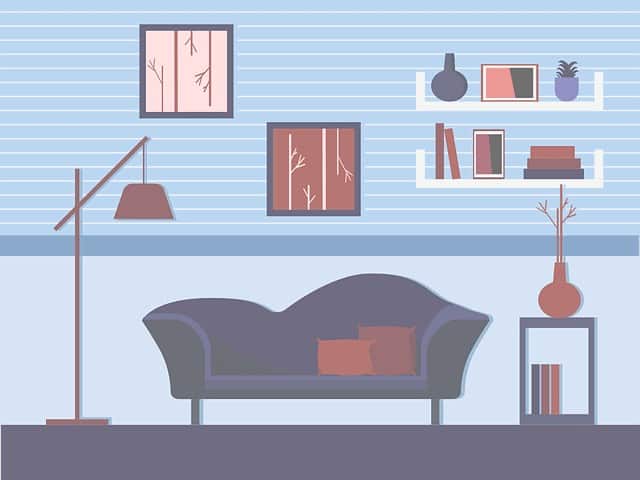 | Living room / Lounge | La sala |
 | Nursery | El cuarto del bebé |
 | Porch | El porche / El pórtico |
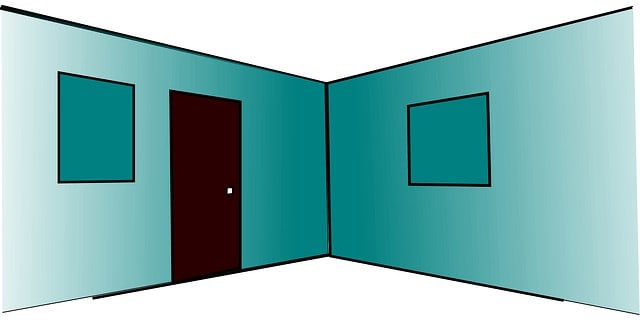 | Rooms | Los cuartos |
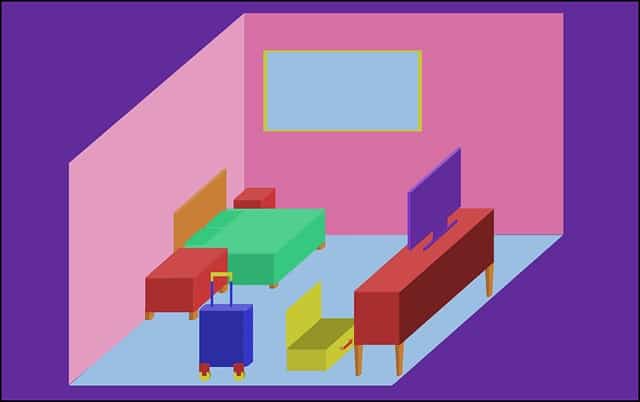 | Spare room | El cuarto de invitados |
 | Study / Home office | El despacho / El estudio |
 | Utility room | El cuarto de servicio |
Objects You Can Find in the House
In this list, you will find some Spanish words for different objects that you can find or use around the house. Keep in mind that this is a general vocabulary, so if you want to learn more specific vocabulary, visit the following sections with more particular words and vocab on specific rooms and parts of the house..
Since knowing if a noun is feminine or masculine can be challenging for new Spanish speakers, each noun will have their proper definite article (el, la, los, las) to help you with this problem.
| Image | English | Spanish |
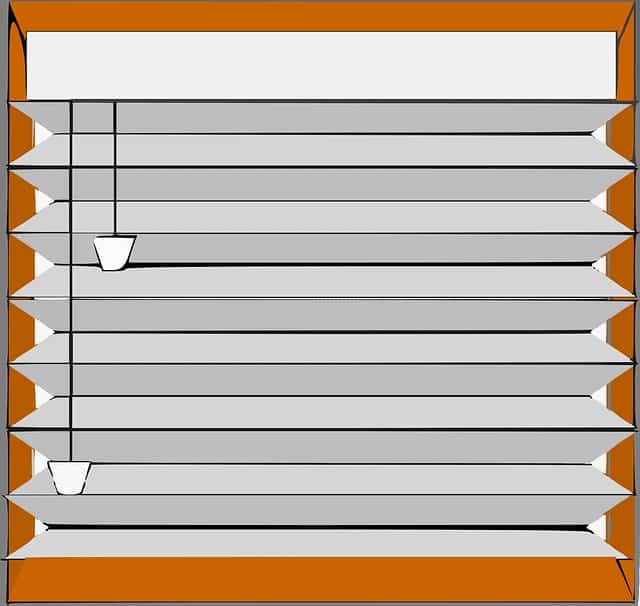 | Blinds | Las persianas |
 | Carpet | La alfombra |
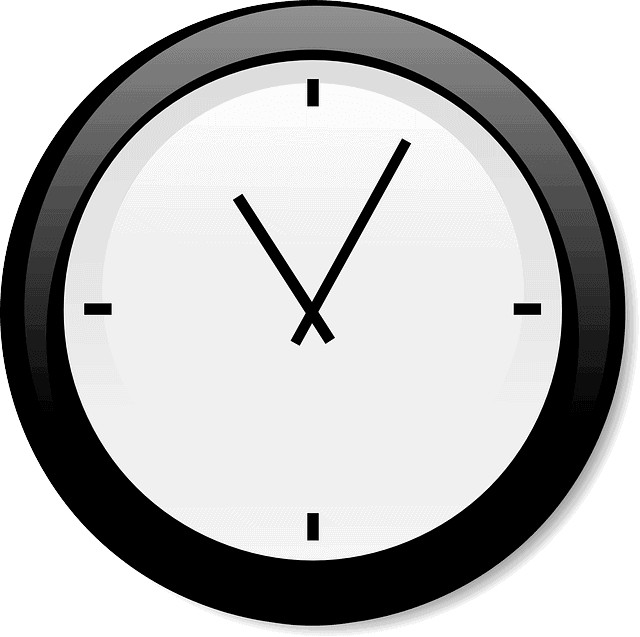 | Clock | El reloj |
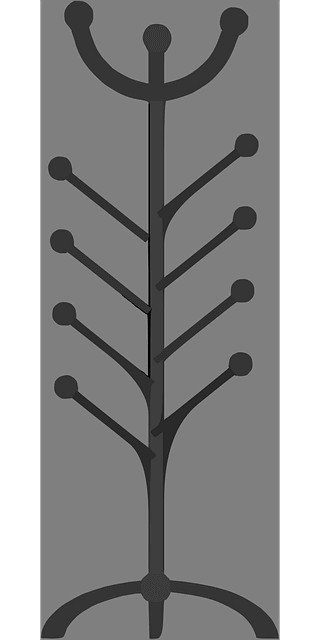 | Coat stand / Coat rack | El perchero |
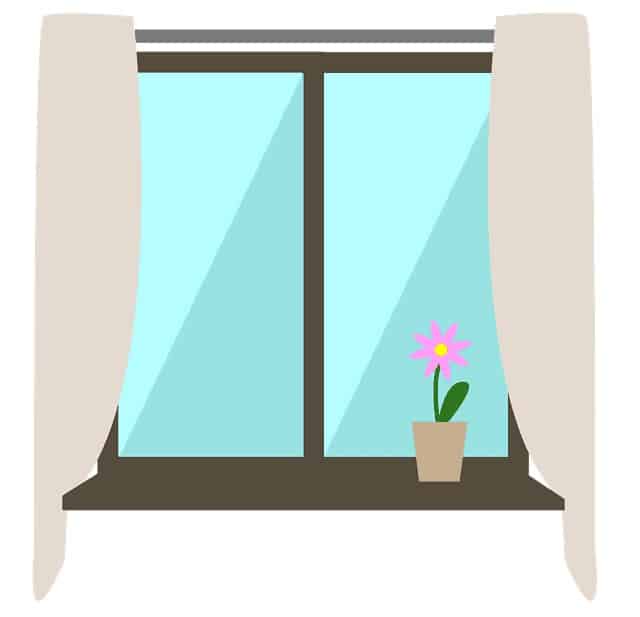 | Curtain | Las cortinas |
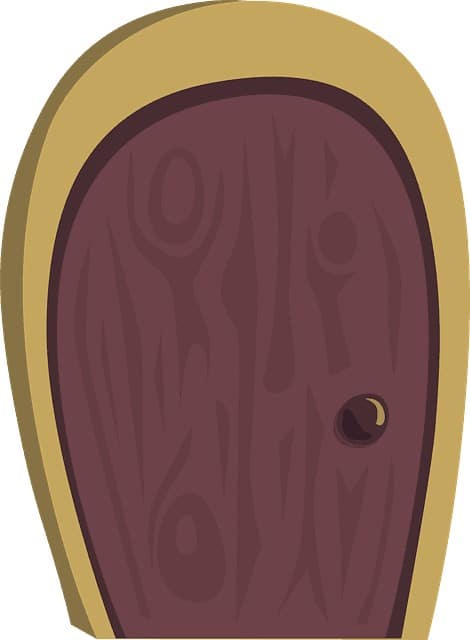 | Door | La puerta |
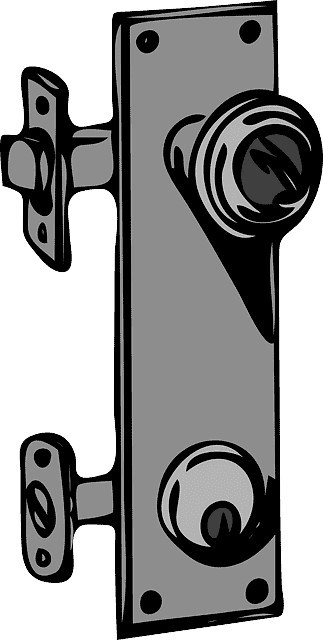 | Door handle / Door knob | El picaporte / El pomo de la puerta |
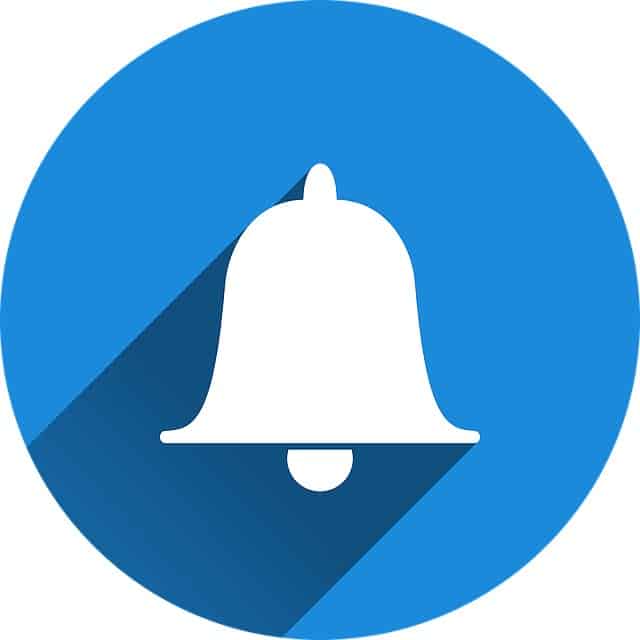 | Doorbell | El timbre |
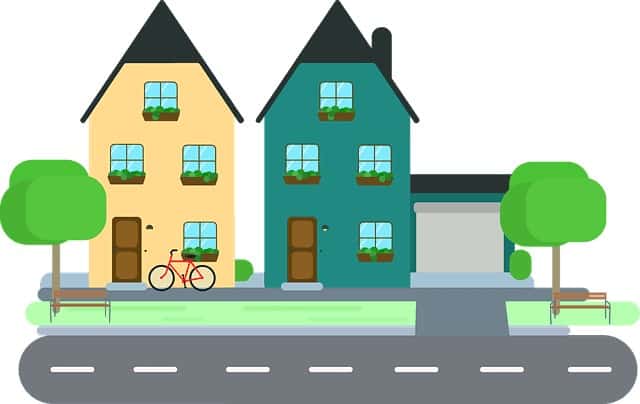 | Facade | La fachada |
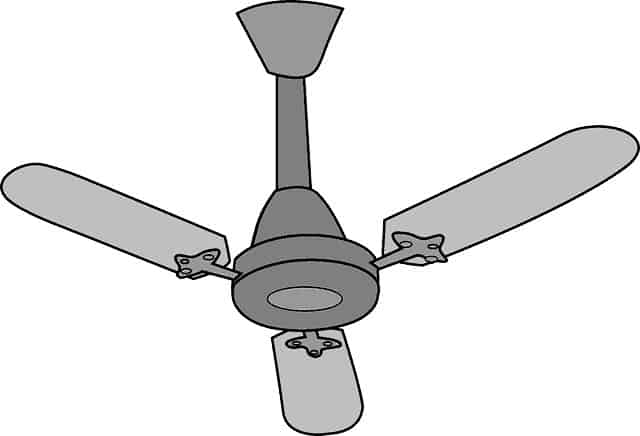 | Fan | El ventilador |
 | Fence | La cerca |
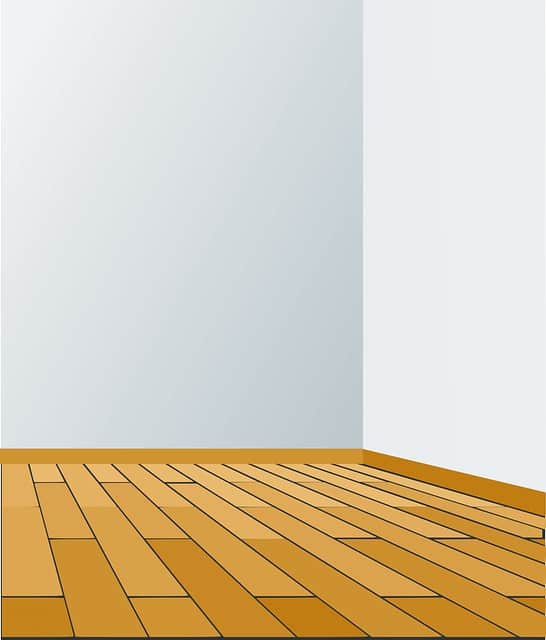 | Floor | El piso |
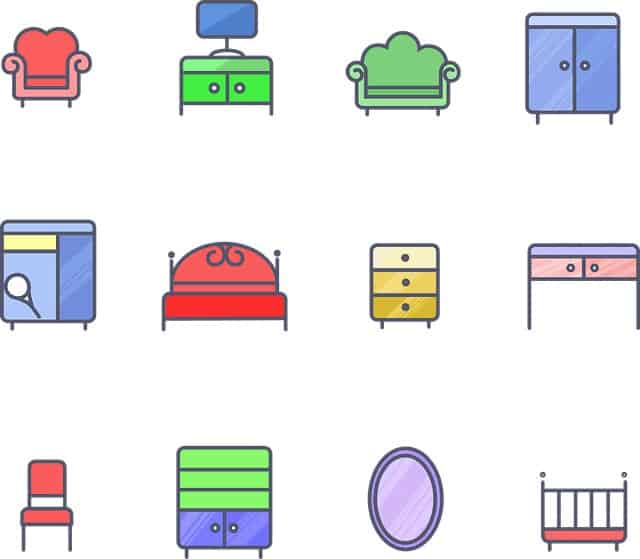 | Furniture | Los muebles |
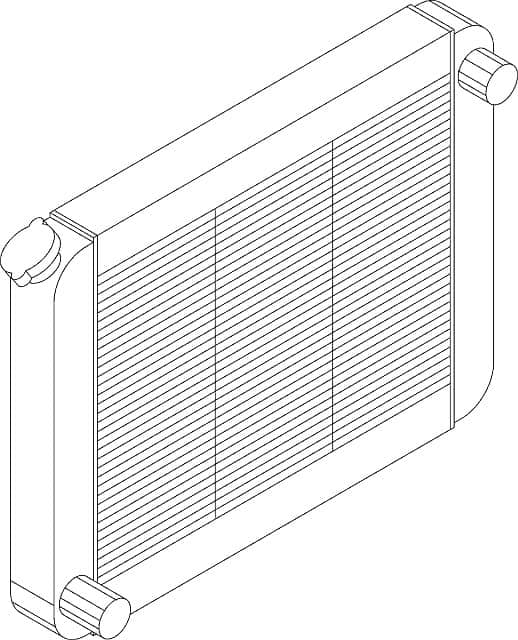 | Heater | La calefacción |
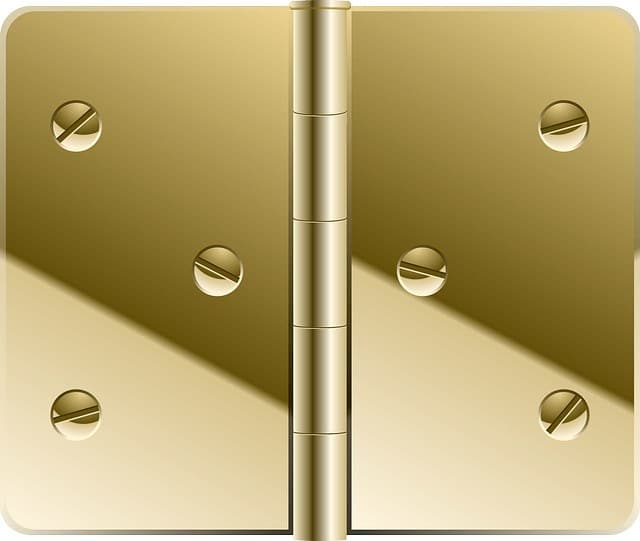 | Hinge | La bisagra / El gozne |
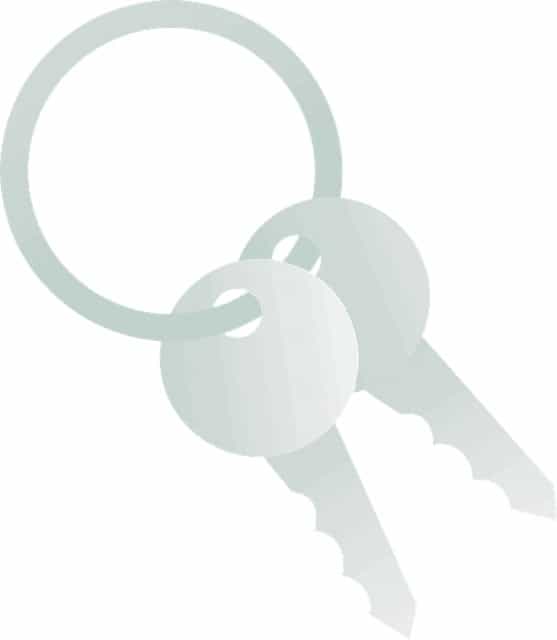 | Keys | Las llaves |
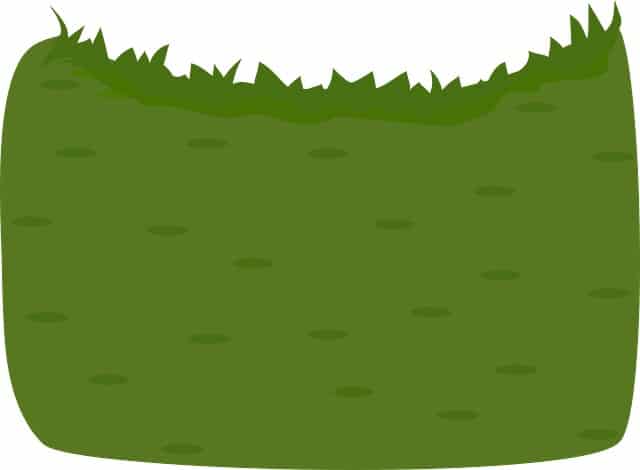 | Lawn | El césped / El pasto |
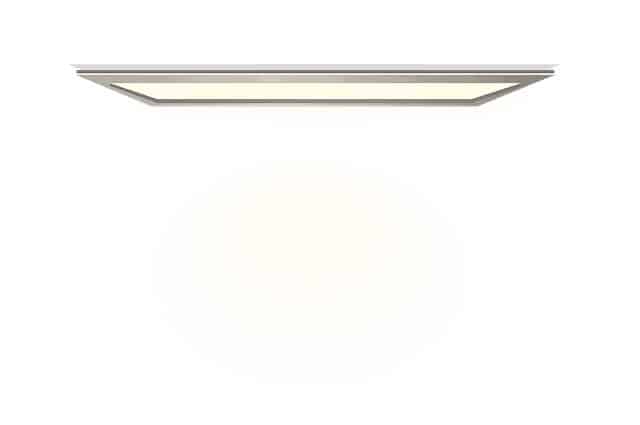 | Light / Power | La luz |
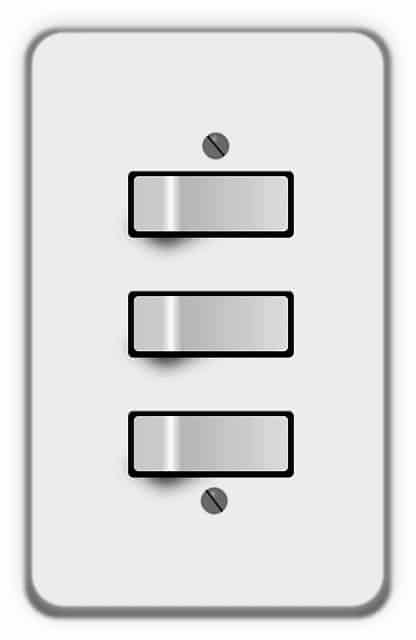 | Light switch | El interruptor / El apagador |
 | Lightbulb | El foco / La bombilla |
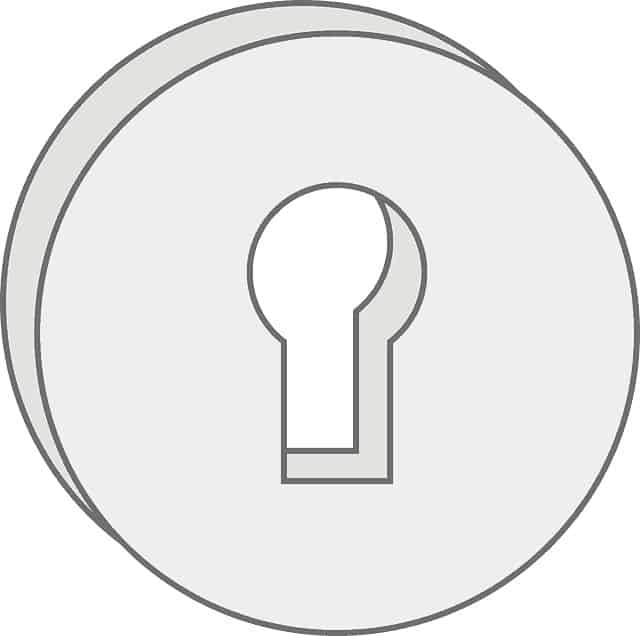 | Lock | La cerradura / La chapa |
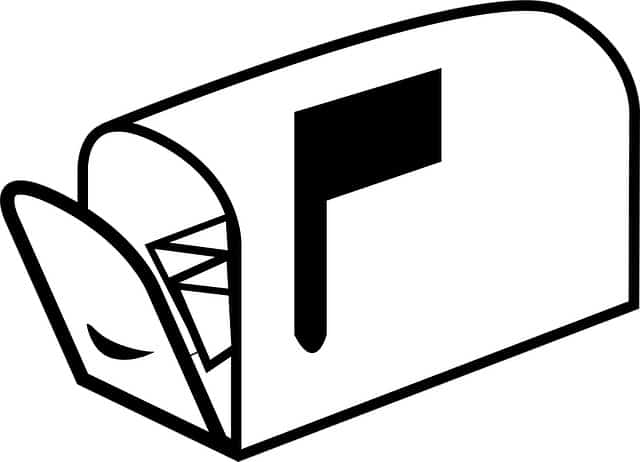 | Mailbox | El buzón |
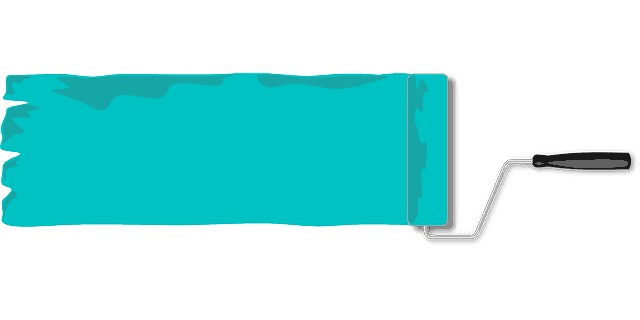 | Paint | La pintura |
 | Painting | El cuadro |
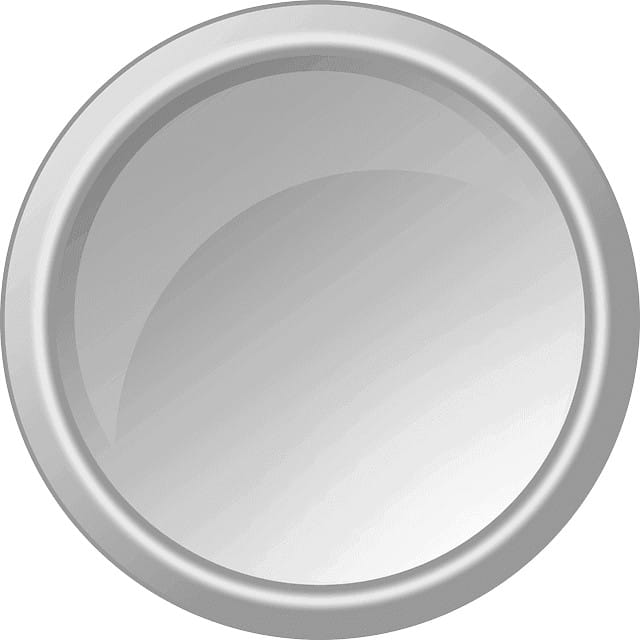 | Peephole | La mirilla |
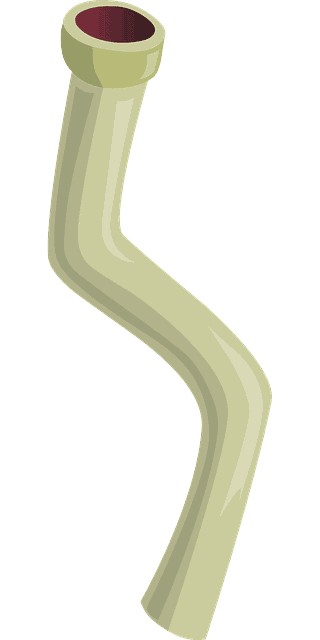 | Pipes | Las tuberías |
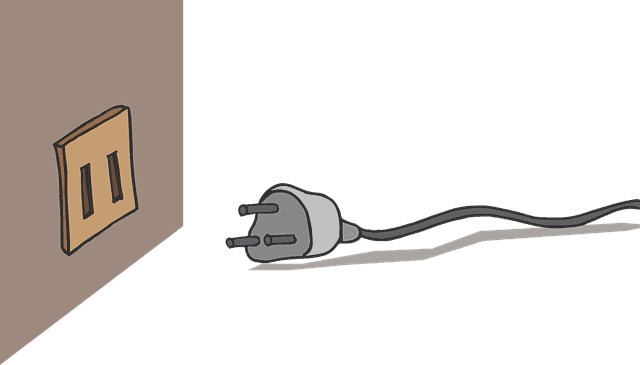 | Power outlet / Plug | El enchufe |
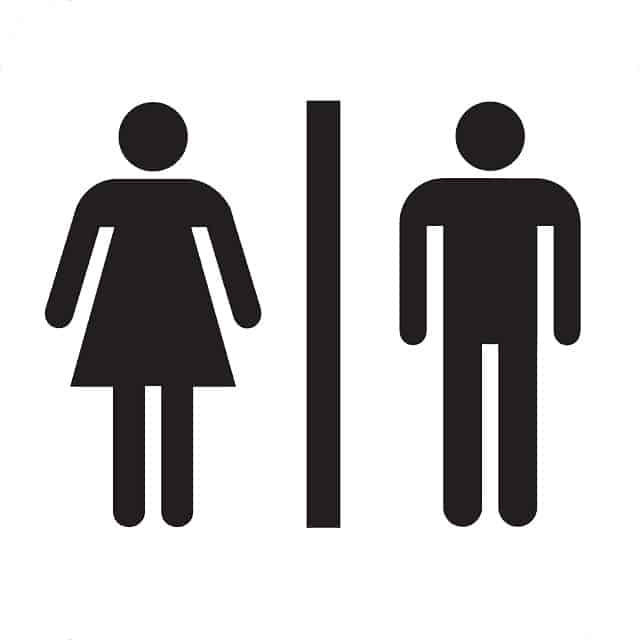 | Restroom / Bathroom | El baño |
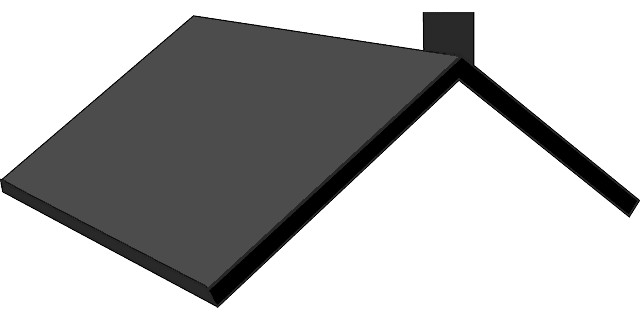 | Roof | El techo |
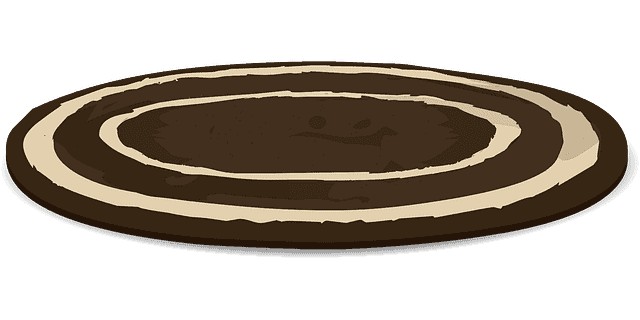 | Rug | El tapete |
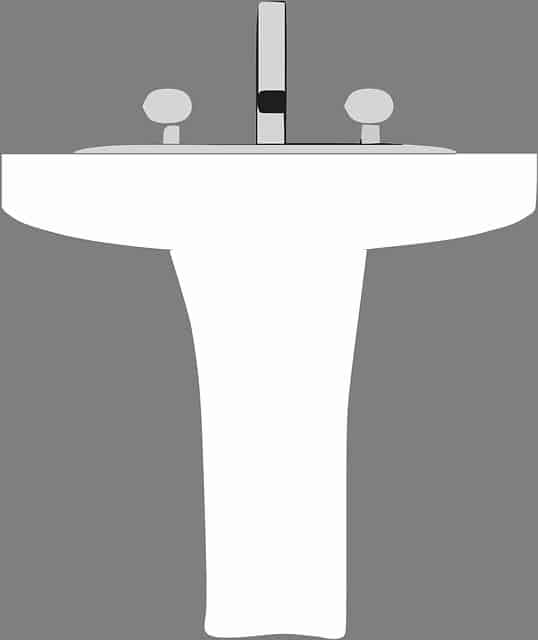 | Sink | El lavabo / El fregadero |
 | Stairs | Las escaleras |
 | Step | El escalón |
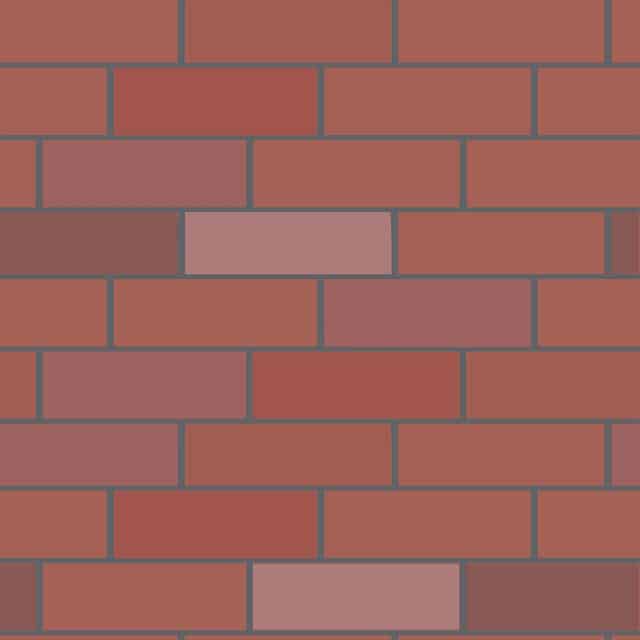 | Wall | La pared |
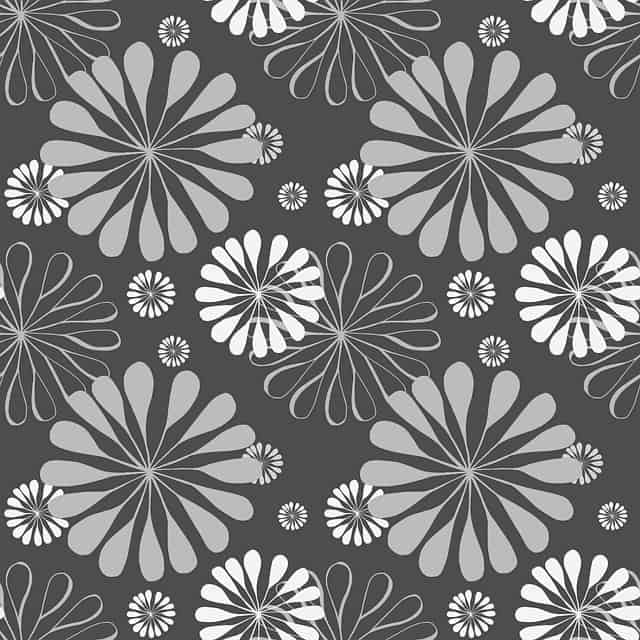 | Wallpaper | El papel tapiz |
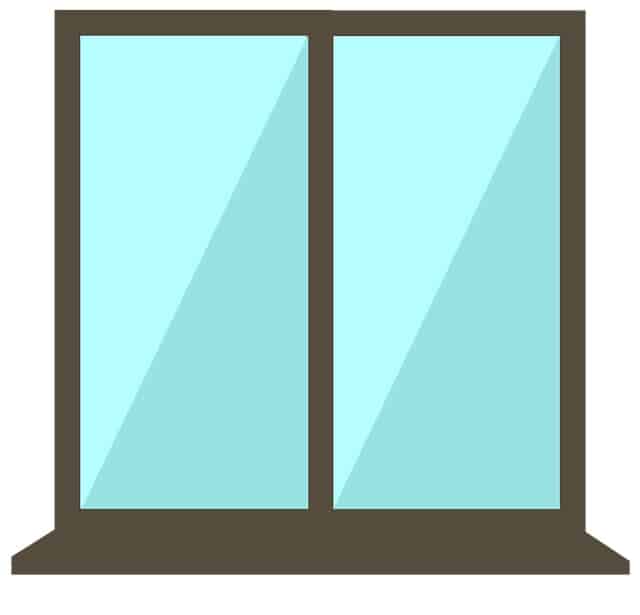 | Window | La ventana |
Take note: Just as in English with ‘floors’, piso could refer to the number of levels in a house or building. However, it’s also used when talking about the ground.
¿Qué tiraron? El piso está muy sucio What did you spill? The floor is so dirty
Hay otro baño en el segundo piso There’s another bathroom on the second floor
Spanish Words for Cleaning the House
The cleaning chores are daily activities that you can use to practice your Spanish. So, here is a list of some of the most common cleaning objects that you may need for these activities.
| Image | English | Spanish |
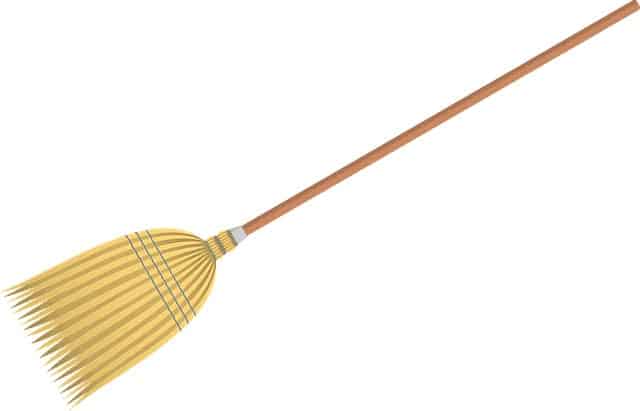 | Broom | La escoba |
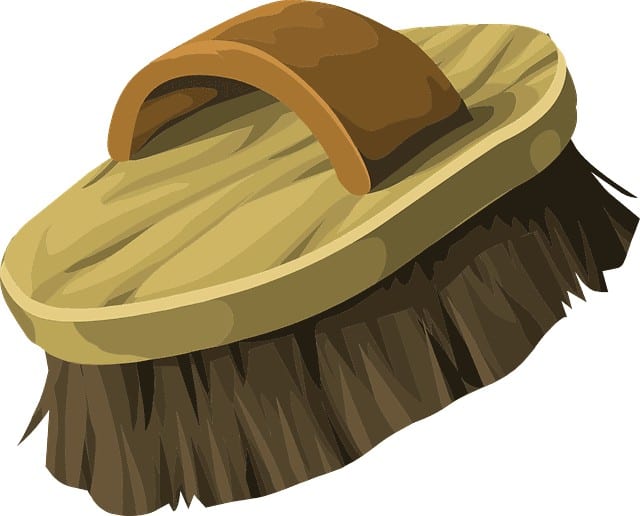 | Brush | El cepillo |
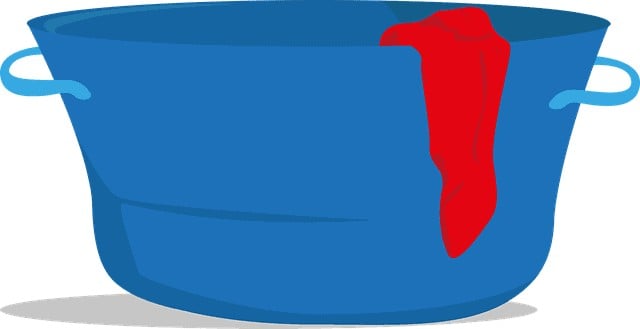 | Cloth | El trapo |
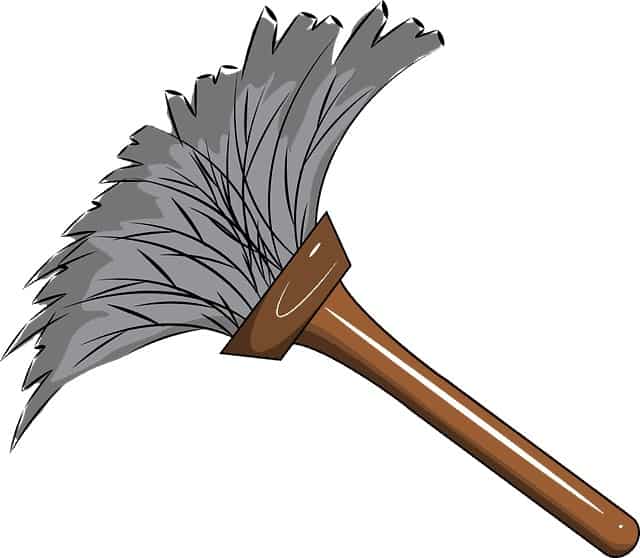 | Duster | El sacudidor / El plumero |
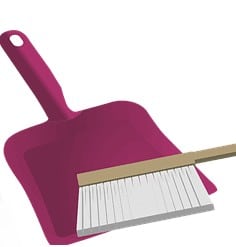 | Dustpan | El recogedor |
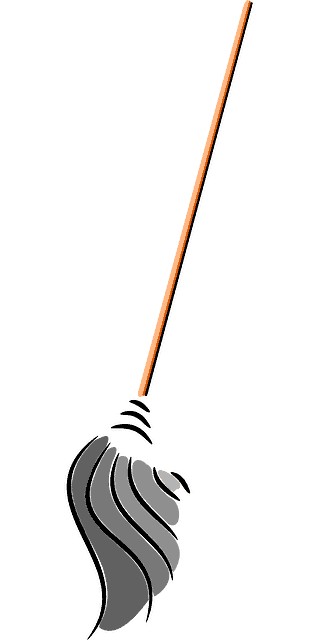 | Mop | El trapeador |
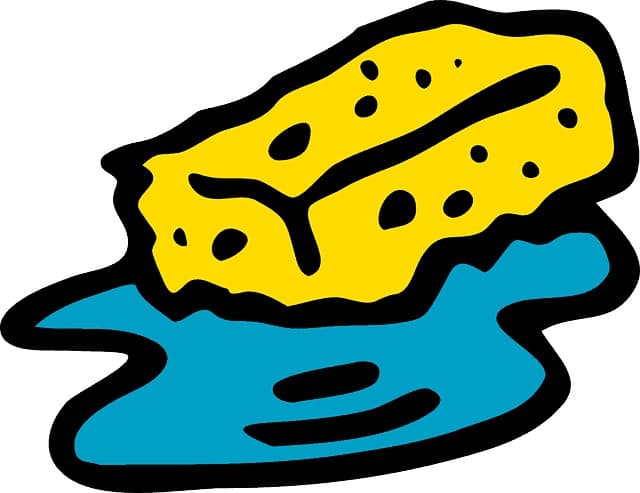 | Sponge | La esponja |
 | Trash can | El bote de basura |
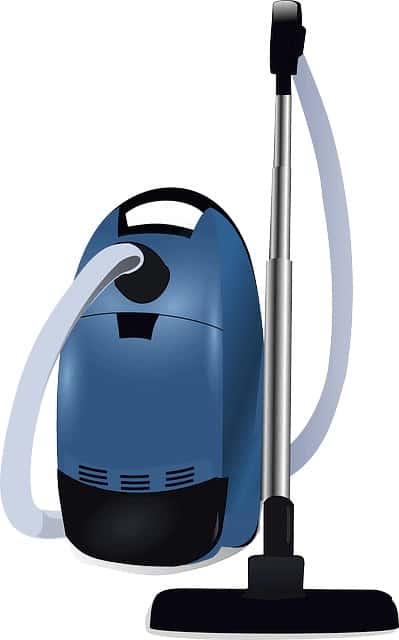 | Vacuum | La aspiradora |
Common Spanish Verbs to Discuss Activities in the House
Here is a list of verbs that you can use to talk about common actions or activities that people perform in their homes. When applicable, we included another common synonym.
| English | Spanish |
| To arrive / To get | Llegar |
| To be / There is | Haber |
| To burn out | Fundir |
| To clean / To tidy up | Limpiar |
| To close | Cerrar |
| To dust | Sacudir |
| To fold the laundry | Doblar la ropa |
| To get dirty | Ensuciar |
| To go upstairs | Subir las escaleras |
| To leave | Irse |
| To lock | Cerrar con llave |
| To mop | Trapear |
| To move | Mover |
| To move out | Mudarse |
| To open | Abrir |
| To paint | Pintar |
| To pick up / To tidy up | Recoger |
| To put up | Colgar |
| To remodel | Remodelar |
| To repair | Reparar |
| To scrub | Fregar / Restregar |
| To sit / To sit down | Sentarse |
| To sweep | Barrer |
| To take down / To go downstairs | Bajar |
| To take the trash out | Sacar la basura |
| To throw away | Tirar |
| To turn off / To turn out | Apagar |
| To turn on | Encender / Prender |
| To unlock | Abrir la cerradura / Abrir |
| To vacuum | Aspirar / Pasar la aspiradora |
| To wash / To launder | Lavar |
| To wipe | Pasar un trapo / Limpiar |
Activities, Common Phrases & Examples using House Vocabulary
In this section, we’ll provide you with some ideas on how to use these Spanish words in your daily life. In order to do this, we’ll show you some phrase structures that you can customize with the house vocabulary. Additionally, we included some common examples that will be useful for your future conversations.
Describing Where Rooms or Things are Located
One of the most practical ways to start applying this new vocabulary related to your home is learning how to explain where things or the different rooms are located. This type of context is useful because not only can you use it when you have guests over, but also it’s applicable on a daily basis with your family members.
Here are some phrase structures that you could use as well as few examples:
Hay + [noun] + [article/pronoun] + [preposition] + [noun / location]
Hay un bote de la basura en la cocina
There’s a trash bin in the kitchen
Si quieres ir al baño, hay otro en el segundo piso
If you want to use the bathroom, there’s another one on the second floor
¿Necesitas cargar tu celular? Hay un enchufe detrás de ese sillón
Do you need to charge your phone? There’s a power outlet behind that couch
As you may know, one of the many uses of ‘estar’ in Spanish is to talk about people or an object’s location. Therefore, you could also use the following phrase structure:
[Estar conjugated] + [noun /object ]
Or
[noun / subject] + [estar conjugated]
María, dile a tu amiga dónde está el baño
Maria, tell your friend where the bathroom is
El baño está al fondo a la derecha
The bathroom is down the hall to the right
[noun / object] + [estar conjugated] + [preposition] + [noun / location]
Tráeme la escoba que está en el patio, por favor
Bring me the broom that is in the yard, please
El baño está en el segundo piso
The bathroom is on the second floor
Asking Questions with House Vocabulary
Eventually, you’ll want to start asking questions with this new vocabulary. In this section you will find some phrase structures that you can start using to do this. Don’t forget to customize them to include a verb or noun related to the house vocabulary.
¿[Question word] + [verb conjugated] + [article / possessive pronoun] + [noun]?
¿Cuál es tu dormitorio?
Which one is your bedroom?
¿Dónde está el interruptor de la luz?
Where is the light switch?
¿Cuándo vas a cambiar los focos de la cocina?
When are you going to change the bulbs in the kitchen?
As you may imagine, the previous structure will allow you to ask as many questions related to the house. On top of this, you could also use the house vocabulary to ask people if they completed an activity that you expected them to do. Here is how you do it:
¿[Verb conjugated] + [article / possessive pronoun] + [noun]?
¿Cerraste la puerta?
Did you close the door?
¿No has reparado el escalón?
Haven’t you repaired the step?
¿Ya aspiraron la sala y sacudieron los muebles?
Did you guys already vacuum the living room and dust the furniture?
Finally, you can use this structure to ask people to do something for you.
¿Poder [conjugated] + [infinitive verb] + [noun]?
Está muy oscuro, ¿puedes prender la luz?
It’s very dark. Could you turn on the light?
¿Puedes colgar este cuadro en esta pared?
Could you hang this picture on this wall?
¿Pueden cerrar con llave cuando se vayan?
Can you lock the door when you guys leave?
Kitchen Vocabulary in Spanish
Whether or not you enjoy cooking, you’ll still need to learn some Spanish basic nouns and verbs that will allow you to communicate when in or discussing the kitchen. In this section, we’ve compiled a short list of common kitchen utensils and appliances, then you’ll learn some common verbs used to discuss actions and activities in the kitchen. Finally, we’ll combine them with useful sentence structure paired with examples to show you how to build phrases and express a multitude of ideas with this particular set of words and activities.
Spanish vocabulary for kitchen utensils
Here is a list of some common words in Spanish that you can use to talk about kitchen utensils and appliances. Since knowing if a noun is feminine or masculine can be hard for new Spanish learners, we include definite articles to help you know the gender of each noun. Remember:
- La – Singular, feminine noun
- El – Singular, masculine noun
- Las – Plural, feminine noun
- Los – Plural, masculine noun
| Images | English | Spanish |
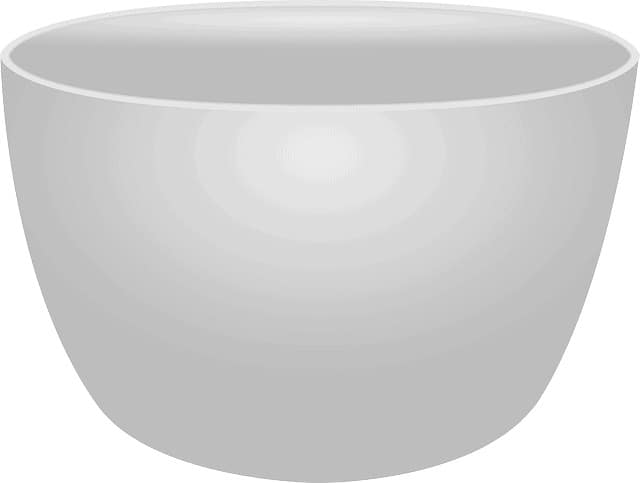 | Bowl | El cuenco / El bol |
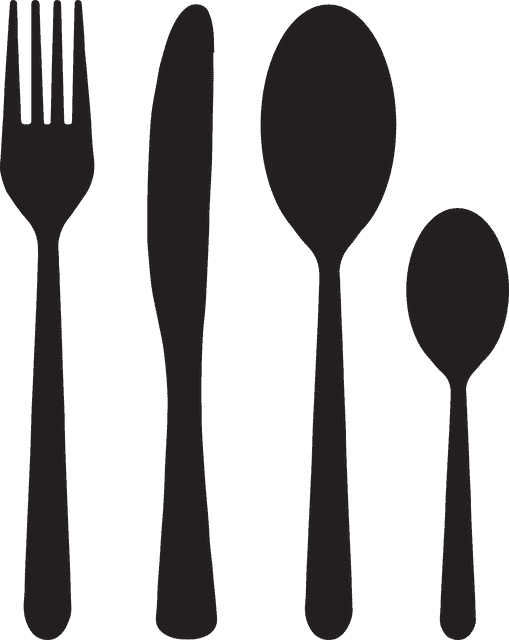 | Cutlery | Los cubiertos |
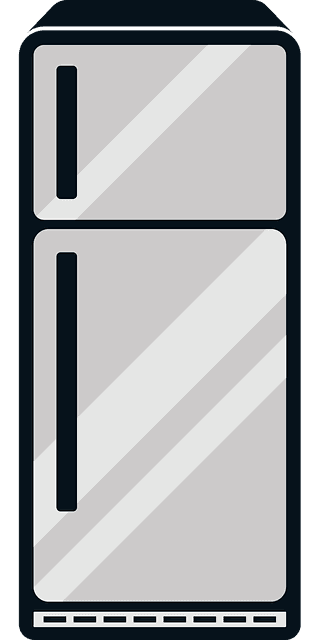 | Fridge | El refrigerador |
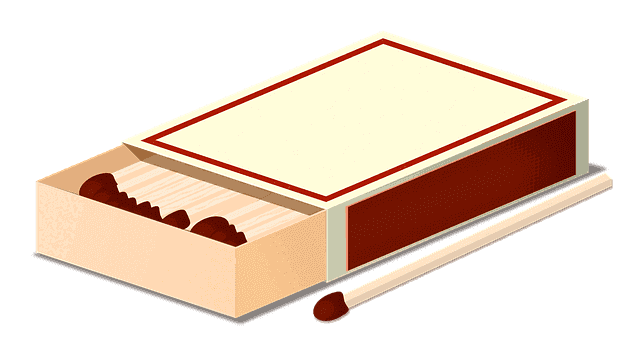 | Matches | Los cerillos |
 | Microwave / Microwave oven | El horno de microondas |
 | Oven | El horno |
 | Pan | El sartén |
 | Plate | El plato |
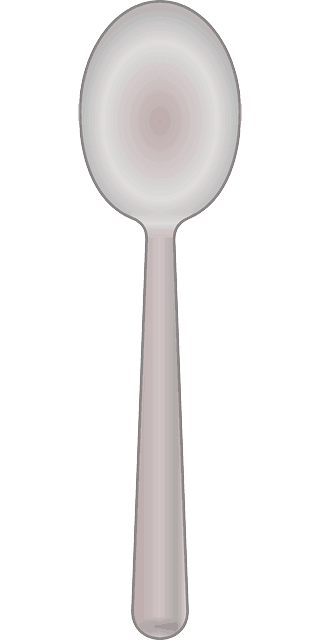 | Spoon | La cuchara |
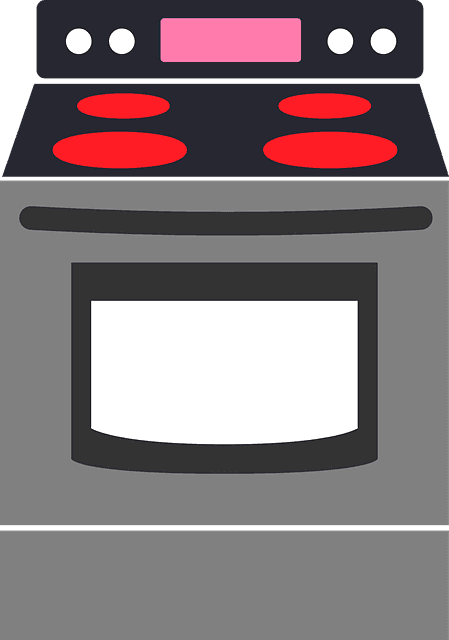 | Stove | La estufa |
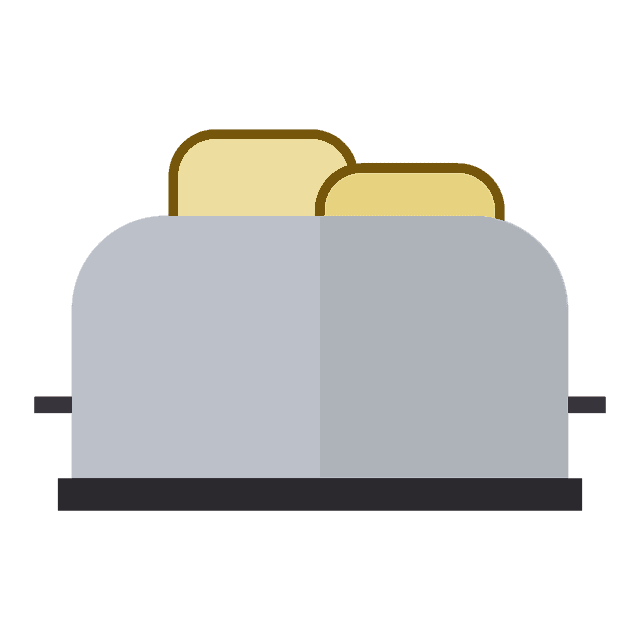 | Toaster | La tostadora |
Common Verbs to Use it the Kitchen
In this short list, you’ll find some of the most basic Spanish verbs for the kitchen. At the end of this section, we’ll provide you with some daily-life examples and phrase structures.
| English | Spanish |
| To boil | Hervir |
| To cook | Cocinar |
| To eat | Comer |
| To have dinner | Cenar |
| To heat | Calentar |
| To pour / To serve | Servir / Verter |
| To spread / To butter | Untar |
| To stir / To scramble | Revolver |
Activities, Common Phrases & Examples using Kitchen Vocabulary
Learning new vocabulary wouldn’t be complete without putting it into practice as soon as possible. That’s why in this section we’re providing you with some common phrase structures that can help you apply this Spanish vocabulary into your daily conversations. The examples that we included will contain verbs and nouns related to the kitchen.
Giving Instructions in the Kitchen
As you may imagine, one of the most common ways to apply the vocabulary for the kitchen is to give others instructions about the things you need them to do. Here is the phrase structure that you need for this case as well as some examples.
[Verb in imperative form] + [noun]
Sírvete cereal y leche
Pour yourself cereal and milk
Calienta la comida que hay en el refrigerador
Heat the food that’s in the fridge
Ya vamos a cenar, pon los cubiertos en la mesa
We’re about to have dinner, put the cutlery on the table
If you noticed, the previous examples are affirmative sentences. At some point you will probably need to tell people what not to do in the kitchen. In these situations, you can use the following structure.
No + [verb in imperative form] + [noun]
Todavía no revuelvas la sopa
Don’t stir the soup just yet
Juan, no le sirvas más jugo a tu hermano, ya tomó suficiente
Juan, don’t pour more juice for your brother, he has had enough already
Describing Your Daily Routines or Activities in the Kitchen
One of the advantages of this vocabulary is that you have a lot of opportunities to practice it since we do many of these activities on a daily basis. The following structure will give you a basic idea of how to apply these words to talk about your activities (or someone else’s) in the kitchen. Keep in mind that the conjugation of the verb can vary depending on your intentions.
[Verb conjugated] + [noun]
Mañana lavaré los trastes
I’ll wash the dishes tomorrow
Todas las mañanas caliento agua para mi café
Every morning I heat water for my coffee
Los sábados mi familia y yo cocinamos un platillo especial
Every Saturday, my family and I cook a special dish
¿Cocinaste el pollo que compramos o qué preparaste?
Did you cook the chicken that we bought or what did you prepare?
Mi papá revuelve su café con una cuchara mientras espera que el horno esté caliente
My dad stirs his coffee with a spoon while he waits for the oven to heat
If you want to know more about this topic and increase your vocabulary, in this article, you’ll find a more complete list of kitchen vocabulary in Spanish. On top of learning more Spanish nouns and verbs for the kitchen, we’ll provide you with more common phrase structures and real-life examples so you can start applying them into your conversations.
Bathroom Vocabulary in Spanish
As you may imagine, the bathroom is one of the rooms where you can perform more activities related to your daily routine. That’s why we gathered some of the most common and important words and verbs to talk about bathroom objects and activities you perform in the bathroom on a daily basis.
As with the previous sections, we’ve provided you with some examples and phrase structures that you can use as guidance to build this vocabulary to your conversations.
Spanish Vocabulary for Objects in the Bathroom
Here you can find some of the most common words in Spanish for objects that you will find in the bathroom. In order to help you know if a noun is feminine or masculine in Spanish, we’ve included their definite articles.
| Image | English | Spanish |
 | Floss | El hilo dental |
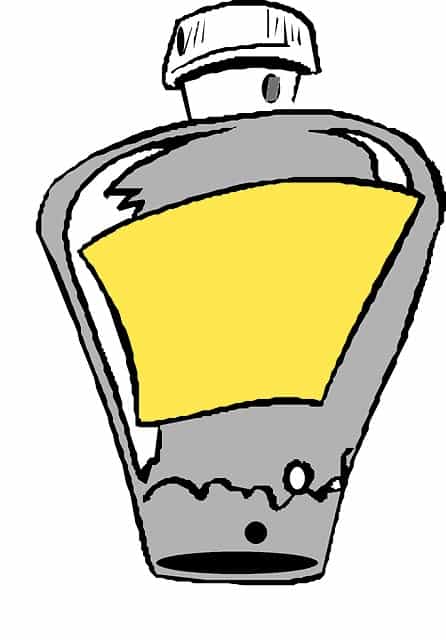 | Mouthwash | El enjuague bucal |
 | Nail clippers | El cortauñas |
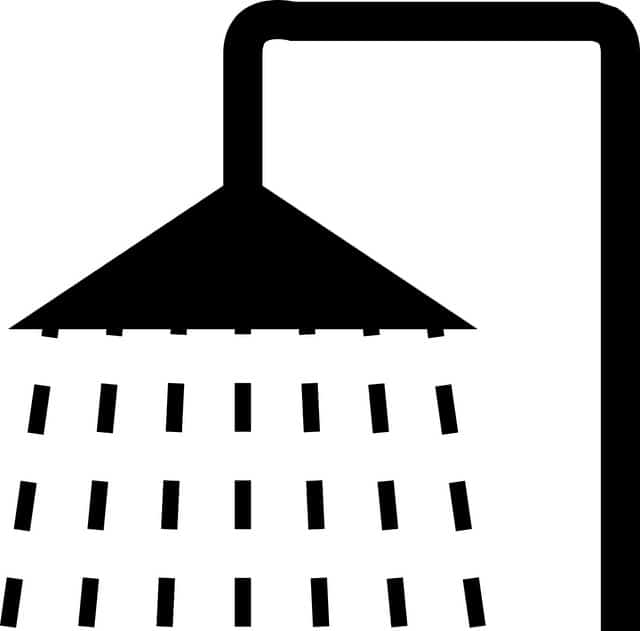 | Shower | La ducha / La regadera |
 | Sink | El lavabo |
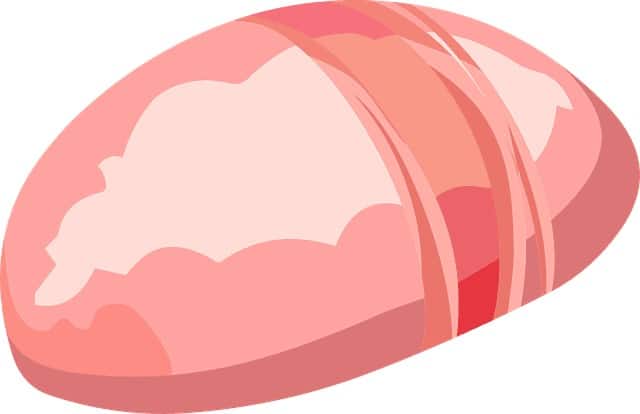 | Soap | El jabón |
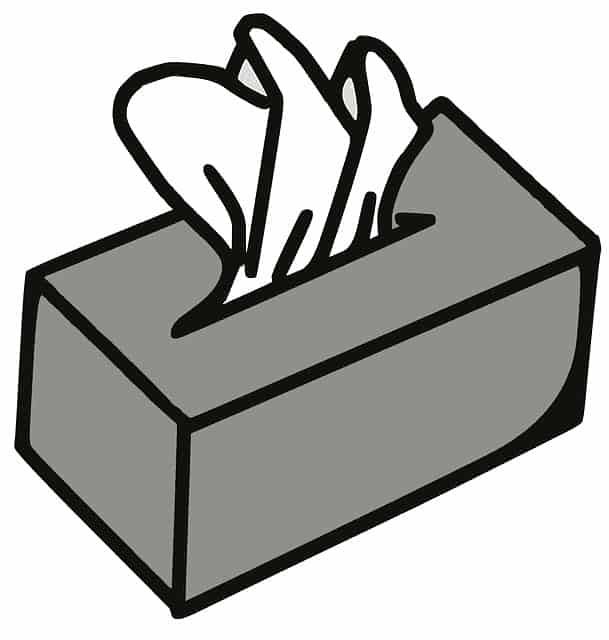 | Tissue | El pañuelo desechable |
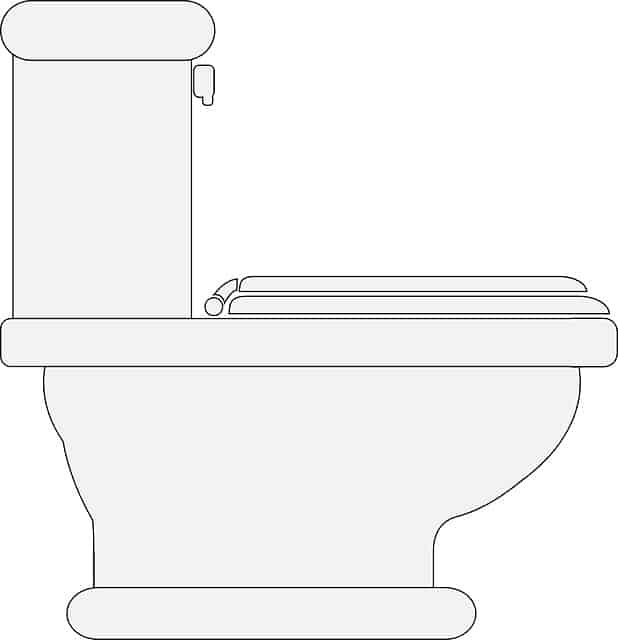 | Toilet | El baño / El inodoro |
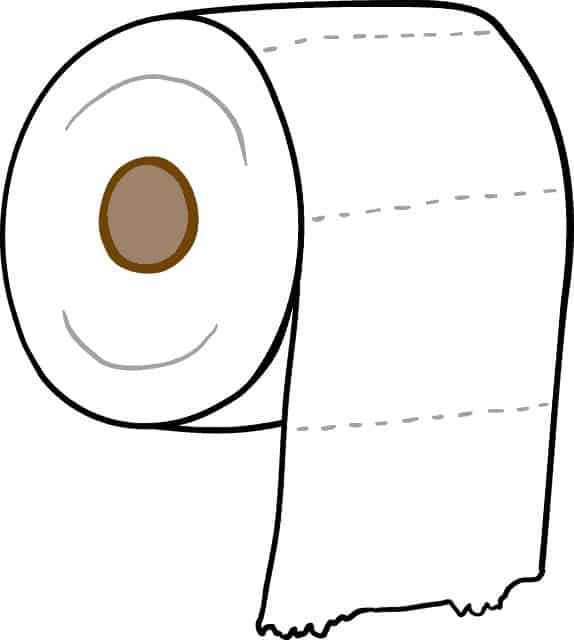 | Toilet paper | El papel de baño / El papel higiénico |
 | Toothbrush | El cepillo de dientes |
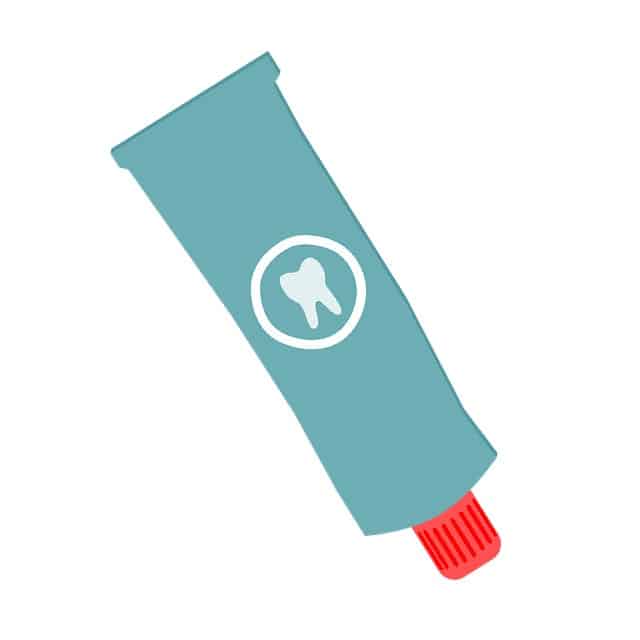 | Toothpaste | La pasta de dientes |
 | Towel | La toalla |
Common Verbs that You Need in the Bathroom
Below you’ll find some of the most basic verbs that we use in Spanish to talk about the activities that we can do in the bathroom. After this vocabulary list, we’ll provide you with some real-life examples.
| English | Spanish |
| To brush your teeth | Cepillarse los dientes |
| To dry yourself | Secarse |
| To flush | Tirar de la cadena / Echarle agua al baño |
| To go to the bathroom | Ir al baño / Hacer del baño |
| To groom | Arreglarse |
| To soap up (oneself) | Enjabonarse |
| To take a shower / To bath / To bathe | Bañarse |
| To wash | Lavarse |
Take note: Even though bañarse is the direct translation of ‘to bath / to bathe’. Some Spanish speaking countries also use this verb as a synonym of ‘to take a shower’.
Activities, Common Phrases & Examples using Bathroom Vocabulary
In order to help you practice your vocabulary and conversations, in this section, we’ll provide you with some examples of how to apply the bathroom vocabulary and verbs that you just learned along with sentence structures to easily build your own.
Asking for Something in the Bathroom
When in the bathroom, it’s common for people to realize that they forgot something and they need to ask someone else for help. A practical way to apply the bathroom vocabulary is to learn how to ask for an object. Here is the phrase structure that we use for this case as well as some examples.
¿[Indirect pronoun] + [poder in present tense] + pasar + [article] + [object]?
¿Me puedes pasar la pasta de dientes?
Could you pass me the toothpaste?
David, ¿nos puedes pasar el hilo dental?
David, could you pass us the floss?
¿Le puedes pasar un papel de baño a tu hermano?
Could you pass your brother a toilet paper?
To Describe your Activities in the Bathroom
As you may have noticed, many of the verbs in the previous vocabulary list are Spanish reflexive verbs. Although the reflexive forms may not be very common in English, in Spanish they are quite important when talking about daily routines or actions that are done and received by the same person.
As a result, these verbs are very useful when talking about your actions or activities in the bathroom. Here is a structure and some examples of how to use these verbs with the bathroom terms we just learned.
[Reflexive verb conjugated] + [complement]
¡Espérame! Me seco el cabello y estoy lista Wait for me! I’ll dry my hair and I’ll be ready
Rosario se cepilla los dientes después de despertarse Rosario brushes her teeth after waking up
Ayer me bañé con agua fría porque hacía mucho calor Yesterday I took a cold shower because it was very hot
If you want to learn more about the different verbs and activities as well as objects in the bathroom, you can discover more bathroom vocabulary in Spanish here. We also provide you with more useful expressions and structures that you can use to apply this vocabulary.
Bedroom Vocabulary
There are a lot of Spanish nouns and verbs that you will need to know in order to talk about the different activities and actions that you can describe specifically in the bedroom.
So in order to help you with this, below you will find a basic list of bedroom-specific vocabulary in Spanish. This vocabulary will be divided into common objects and verbs that we use to talk about our activities in the bedroom. Finally, we’ll provide you with examples and phrase structure so you can start applying these words by yourself.
Spanish Words for Objects & Furniture in the Bedroom
Below are some of the most common Spanish words to talk about objects in the bedroom. You’ll notice that in some of these words we’ve included another synonym. This is because both words are very popular in Spanish and, even though some Spanish speaking countries may have a preference, you can use any of them.
| Images | English | Spanish |
 | Alarm clock | El despertador / La alarma |
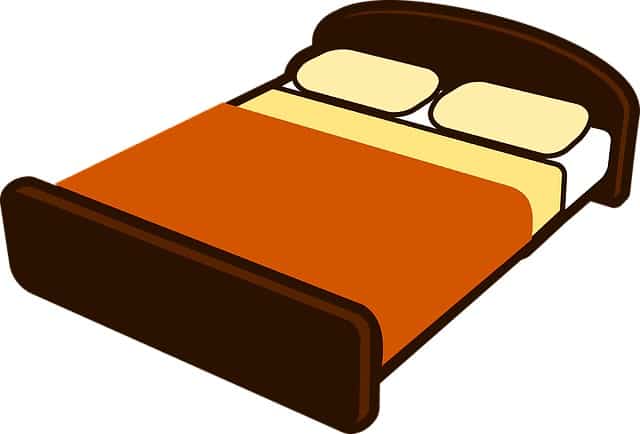 | Bed | La cama |
 | Bedtime | La hora de dormir |
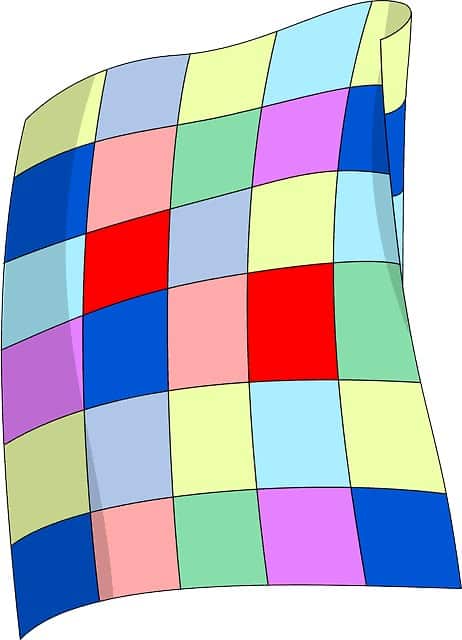 | Blanket | La cobija / La manta |
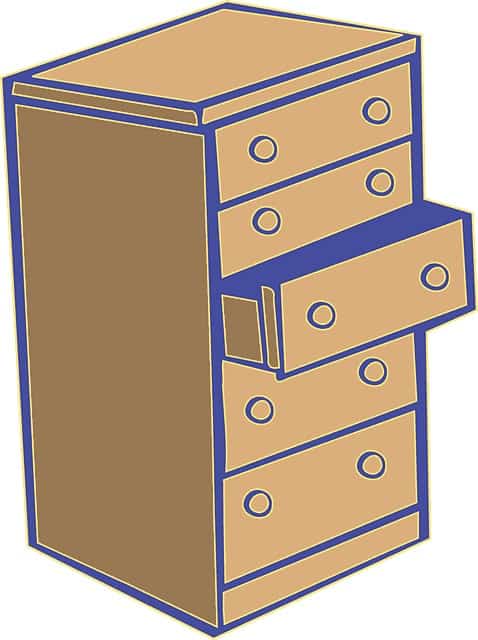 | Chest of drawers / Dresser | La cómoda |
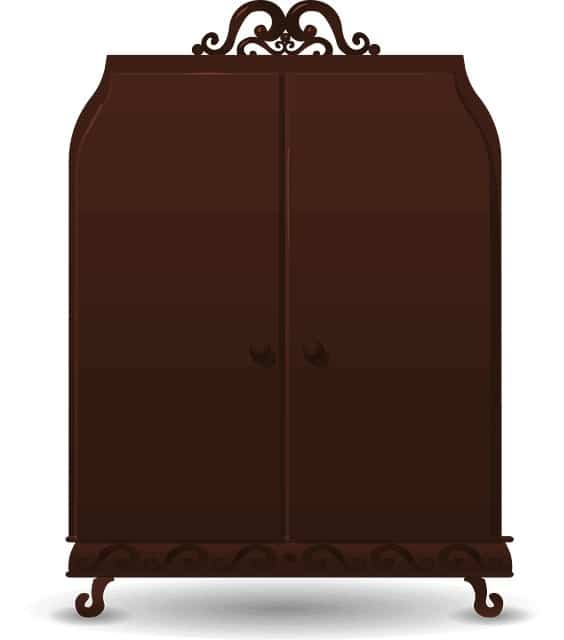 | Closet | El ropero / El armario |
 | Headboard | La cabecera / El cabecero |
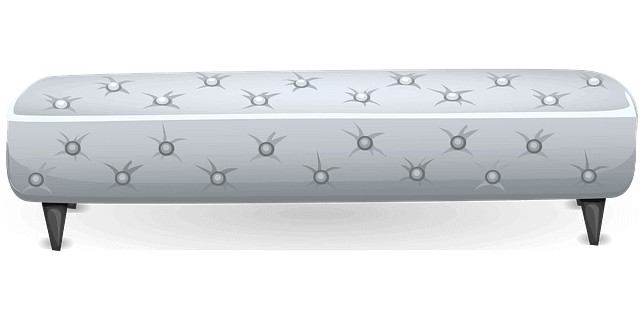 | Mattress | El colchón |
 | Nap | La siesta |
| Pillow | La almohada | |
 | Pillowcase | La funda de la almohada |
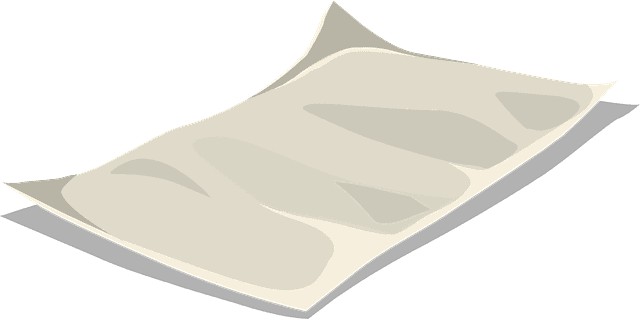 | Sheet | La sábana |
Common Verbs Related to the Bedroom
Here you have a basic list of verbs that will allow you to talk about some of the most common actions that we perform in the bedroom. Notice that some of these Spanish verbs are in their reflexive form.
| English | Spanish |
| To fall asleep | Quedarse dormido |
| To get dressed | Vestirse |
| To go to bed | Irse a la cama / Irse a dormir |
| To make the bed | Hacer la cama / Tender la cama |
| To sleep | Dormirse |
| To snore | Roncar |
| To wake up | Despertarse |
| To wake up / To get out of bed | Levantarse |
Activities, Common Phrases & Examples using Bedroom Vocabulary
Now that you know some Spanish basic, bedroom-specific words and verbs, it’s time to see how to put this new vocabulary into practice and daily conversation. In order to do that, you’ll find different phrase structures and examples of how to use these words in a regular conversation.
Giving Instructions or Recommendations
In some cases, you’ll want to give orders, instructions or recommendations to others in relation to your or their bedroom. If that’s the case, then the examples and sentence structures below will help do just that. In order to make your sentences relevant to the bedroom, you should use nouns or verbs related to this room.
[Verb imperative] + [article/possessive pronoun] + [noun]
¡Ya despiértate! Se te va a hacer tarde Wake up now! You’re going to be late
Nos vamos temprano, entonces, pon la alarma a las siete We’re leaving early, so, set the alarm for seven
Vete a dormir o mañana te va a costar trabajo levantarte Go to bed or tomorrow will be difficult for you to wake up
Here are some examples on how to build negative sentences. You could use this structure to tell people what not to do.
No + [Verb imperative] + [article/possessive pronoun] + [noun]
¡No traigas otra almohada! Ya tenemos muchas Don’t bring another pillow! We already have a lot
Luz, no tiendas tu cama, sigue descansando Luz, don’t make your bed, you better keep resting
Asking About Someone’s Night or Activities
Another common way to interact with people and having conversations with bedroom verbs is by asking them about their night. Although there are many ways to do this, here is a basic phrase structure that you could use as well as some examples.
¿[Question word] + [verb past tense]?
¿Cómo durmieron, chicos? How did you sleep, guys?
¿A qué hora te despertaste, Laura? What time did you wake up Laura?
¿Qué tal descansaste en la nueva cama, mamá? How did you rest in the new bed, mom?
If you want to learn more specific vocabulary, in this article, you’ll find a complete list of Spanish words and verbs related to the bedroom. It provides a more comprehensive list of vocab as well as phrase structures and examples you can use in daily conversations.
Living Room Vocabulary
One part of your house that probably sees a lot of attention is the living room. No house vocab guide would be complete without a section. As with the previous sections, we’ll list the most common words, verbs and sentences necessary to incorporate this topic in your Spanish speaking toolkit.
Spanish Words for Furniture and Objects in the Living Room
Even though this room may have a lot of objects and different furniture, below we’ll focus on Spanish words for the most common objects in the living room. Don’t forget that this list was built with standard Spanish vocabulary, so you can use these words in all Spanish speaking countries.
| Image | English | Spanish |
 | Bookcase / Bookshelf | El librero / La estantería |
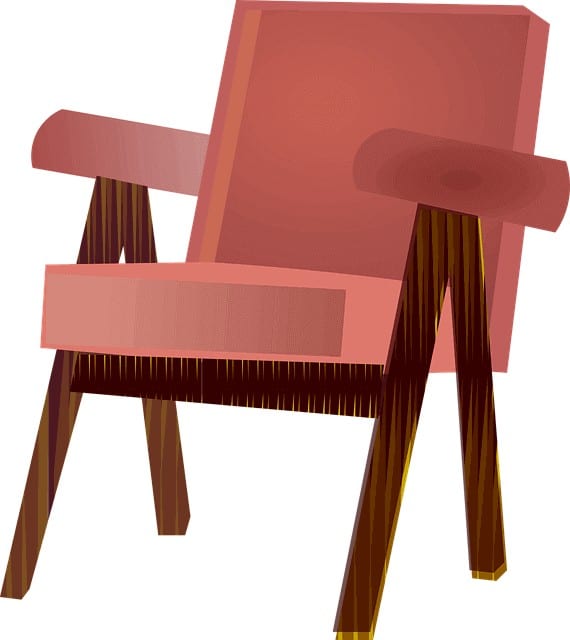 | Chair | La silla |
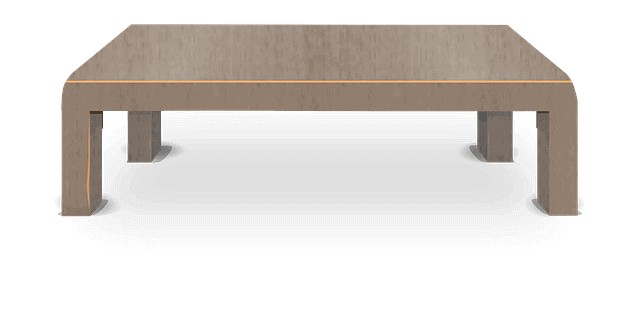 | Coffee table | La mesa de centro |
 | Couch | El sillón |
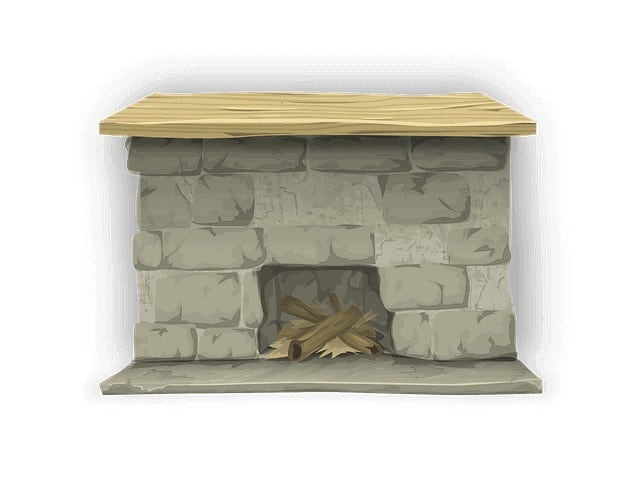 | Fireplace | La chimenea |
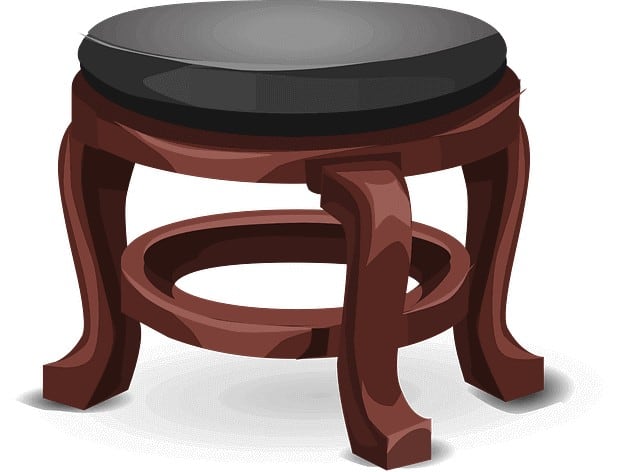 | Footstool / ottoman | El reposapiés / El taburete |
 | Furniture | Los muebles |
 | Guests | Los invitados |
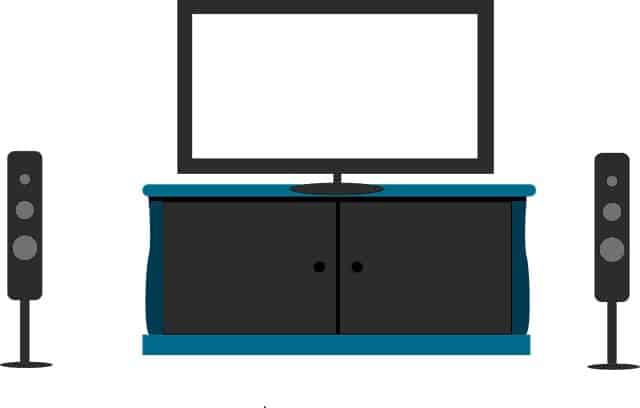 | Wall unit / Entertainment unit | El centro de entretenimiento |
Common Verbs to Talk About the Living Room
Here, you’ll find some Spanish verbs for the most popular activities that people perform in their living rooms.
| English | Spanish |
| To chat | Conversar / Platicar |
| To gather | Reunirse |
| To relax | Relajarse |
| To sit | Sentarse |
| To turn off | Apagar |
| To watch | Ver / Mirar |
Take note: Mirar can also be translated as ‘to look’. However, when talking about ‘watching tv’, in some Spanish speaking countries, people can use ‘mirar’ instead of ‘ver’
Activities, Common Phrases & Examples using Living Room Vocabulary
Since the activities and the objects that you find in the living room are very familiar to you, practicing these new Spanish words shouldn’t be very difficult. Here are some basic structures and examples of how to build sentences using the Spanish vocabulary listed above.
Talking about Living Room Activities
Here is a basic structure that you can use for talking about the most common activities that living rooms are used for.
[Verb conjugated] + [complement]
Me gusta sentarme junto a la chimenea I like to sit next to the fireplace
Mi roomie y yo nos relajamos mirando televisión My roomie and I relax watching tv
Todos los sábados mis tíos se reúnen en la sala de mi casa Every Saturday my uncles gather in my living room
Even though the previous sentences are conjugated in the present tense, feel free to change the verb to match your intentions.
Ayer compramos nuevos sillones Yesterday we bought new couches
Offering Something / Hosting Guests
Since having guests in the living room is very common, you could also use the previous Spanish vocabulary to offer them something. In this section, we’ll show you a simple and easy phrase structure that you could use for these cases. Additionally, you could use one of the following expressions, which we use to make people feel welcome:
- Estás en tu casa – Make yourself at home
- Pónte cómodo – Make yourself comfortable
¿Querer [conjugated] + [infinitive verb]?
¿Quieres sentarte? Por favor, pónte cómodo Do you want to sit? Please, make yourself comfortable
Lucas, Pilar, ¿quieren ver algo en la televisión? Carlos viene en un momento Lucas, Pilar, do you want to watch some TV? Carlos will be here in a moment
As you may have noticed, the previous words and verbs are very basic words that can help you have simple conversations in Spanish. If you want to dive deeper into specific living room vocab and sentences, this guide contains a complete vocabulary list for the living room in Spanish.
Dining Room Vocabulary
Last but not least is the dining room. This will complete our house vocabulary guide with words, objects and verbs highly relevant for talking about the dining room. As always, expect a set of examples and sentence structures to start committing this vocab to memory.
Spanish words for objects in the dining room
There’s no doubt that you can find a lot of objects in the dining room. In this section, we compiled a basic list of common nouns that you can use to name things in Spanish to get you started.
| Image | English | Spanish |
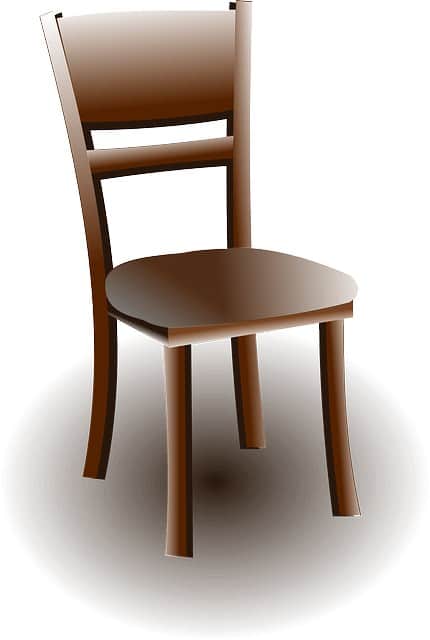 | Chairs | Las sillas |
 | Clutery | Los cubiertos |
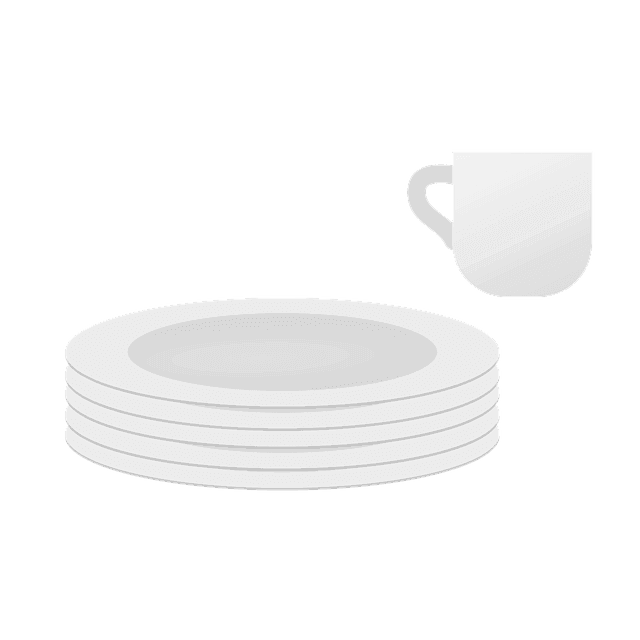 | Crockery / Dishes | La vajilla |
 | Dining Room | El comedor |
 | Napkin | La servilleta |
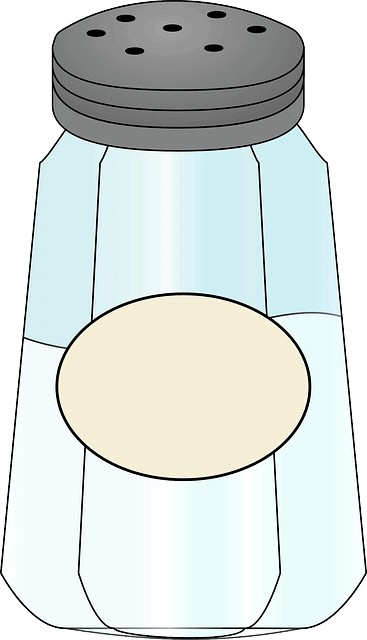 | Salt shaker | El salero |
 | Table | La mesa |
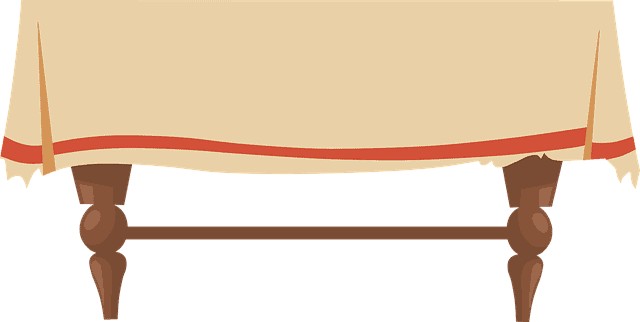 | Table cloth | El mantel |
 | Toast | El brindis |
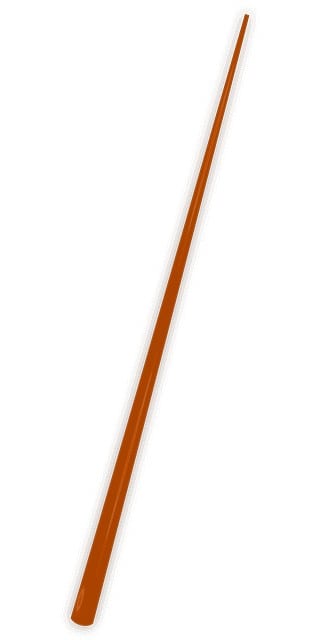 | Toothpicks | Los mondadientes / Los palillos |
Common verbs that you need in the dining room
In this list, you’ll find some Spanish verbs that you can use to talk about the actions or activities people perform in the dining room.
| English | Spanish |
| To clear the table | Quitar la mesa |
| To eat | Comer |
| To have seconds | Repetir |
| To lay the table / To set the table | Poner la mesa |
| To serve / To pour | Servir |
| To toast | Brindar |
Activities, Common Phrases & Examples using Dining Room Vocabulary
Below are some examples of how to apply this dining room vocabulary into real-life situations. Be aware that the following phrase structures are just some ideas to help you start. Therefore, you may come up with your own Spanish structures as your Spanish skills develop over time.
Asking People if They Need Something
Whether you have guests over or you’re talking to your own family, you can use the dining vocabulary to make sure that people are fine and comfortable. Although there are many ways to pose this type of question, the following structure is a basic way to ask people if they need something.
¿Querer [conjugated] + [noun]?
Andrea, ¿quieres otra servilleta? Andrea, do you want another napkin?
¿Quieres el salero? Creo que a la sopa le falta sal Do you want the salt shaker? I think the soup needs salt
¿No quieres otra silla? Esa en la que estás se ve muy incómoda Don’t you want another chair? That one looks very uncomfortable
If you want to expand your Spanish vocabulary, you could replace ‘querer’ for ‘necesitar’. Even though the intention of the sentence remains the same, you’ll be slightly more polite:
Andrea, ¿necesitas otra servilleta? Andrea, do you need another napkin?
Compliment the Host or the Food
Knowing some common phrases to compliment your hosts is a nice and useful way to practice your Spanish and pay praise to your hosts.. You can use this structure in your home or when you’re a guest in someone else’s house. These phrases are also appropriate for complimenting objects or food.
¡Qué + [adjective] + [verb conjugated] + [singular noun]!
Iliana, ¡qué bonita está tu vajilla! Iliana, your crockery is very pretty!
¡Qué grande y cómodo está su comedor! Your dining room is so big and comfortable!
¡Qué rico comimos, muchas gracias por la cena! We ate very nice, thanks so much for the dinner!
We mentioned earlier that this section will contain a very basic Spanish vocabulary for the dining room. If you want to learn more nouns and verbs that you can use in this room, check out this complete guide on dining room vocabulary in Spanish with 90+ words and verbs as well as more sentence structures and examples.
Conclusion
When learning Spanish, it’s very important to know some domain-specific vocabulary that allows you to have simple conversations with other speakers. Since the house vocabulary is easy to relate to, in this article, we compiled a list of words and verbs for various aspects of the house in Spanish.
Even though there are some common actions or objects that you can find around the house, each room will have its own specific words. That’s why this article was divided into different sections.
On top of providing you with a list of the 175+ most common words and verbs, we also showed you some phrase structures so you have an easy way to apply the new vocabulary into daily Spanish conversations. Finally, we created some examples using the nouns and verbs that we learned.
Hopefully, now you know more Spanish words to talk about the action and objects than you can find in your house as well as in the kitchen, bedroom, dining room, bathroom and living room. Now it’s time to start putting this vocabulary into practice.

